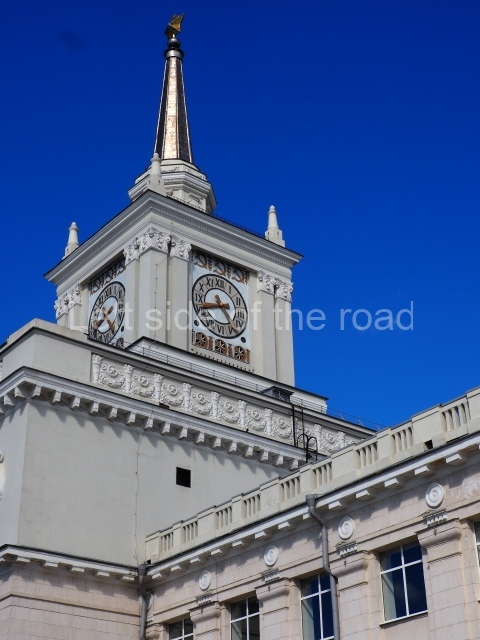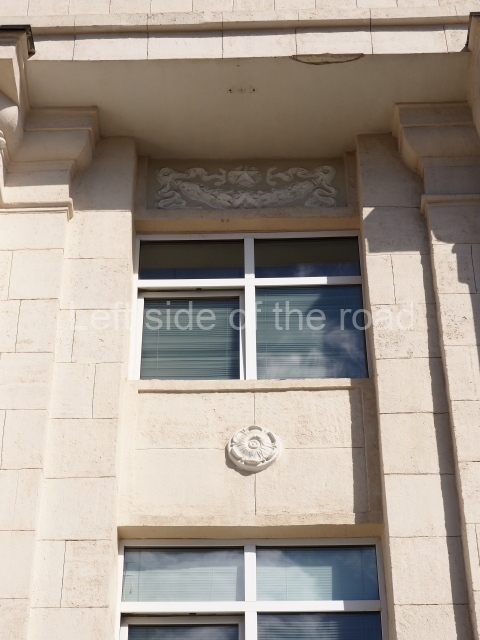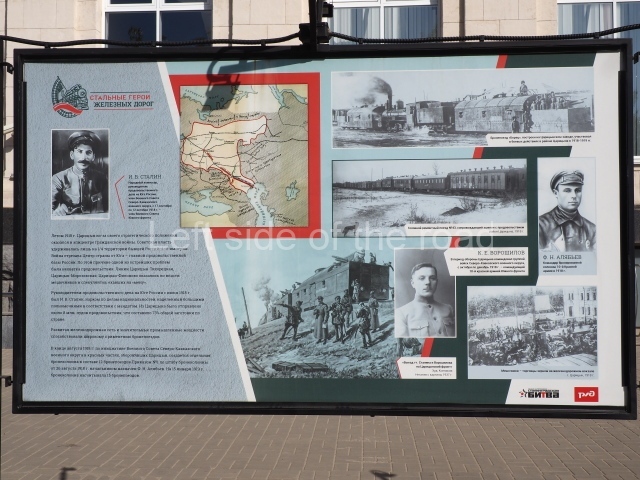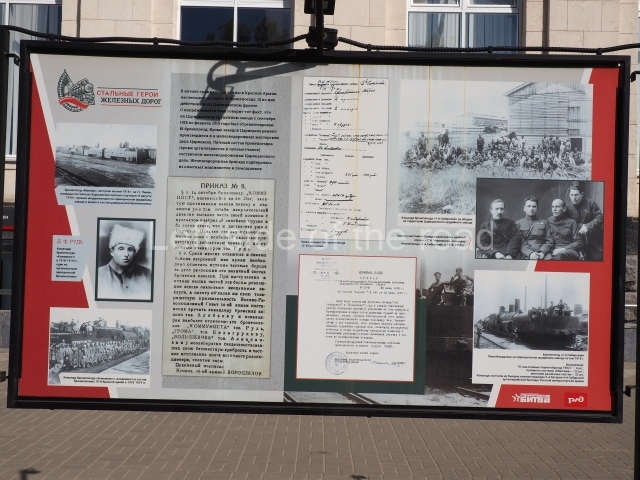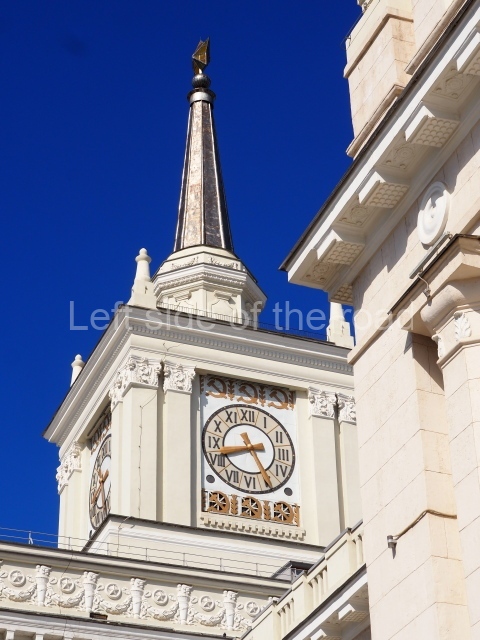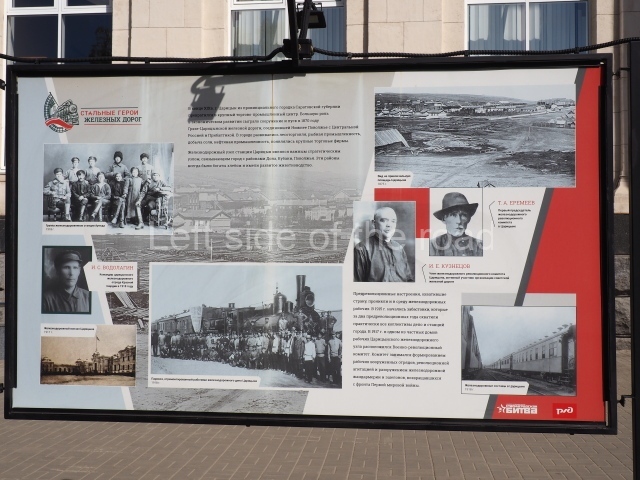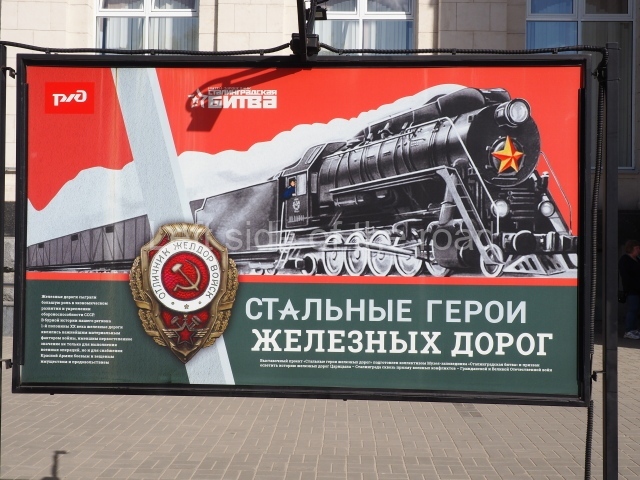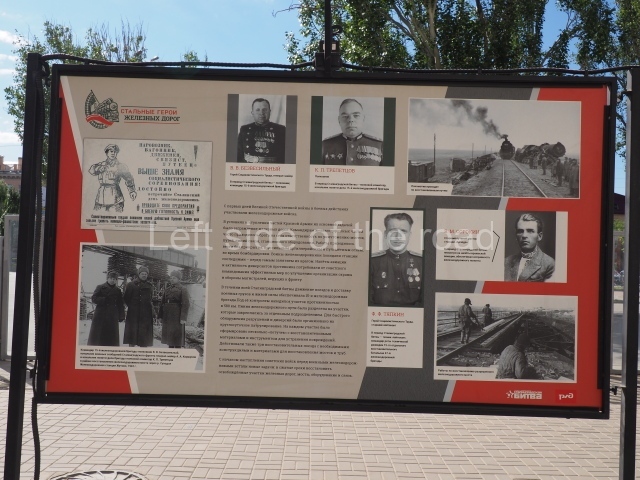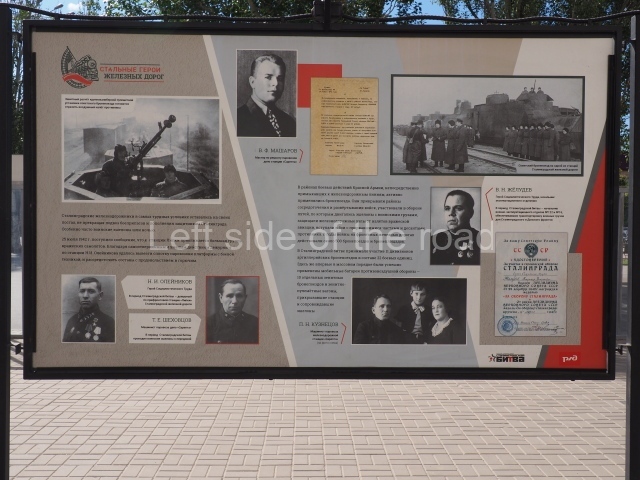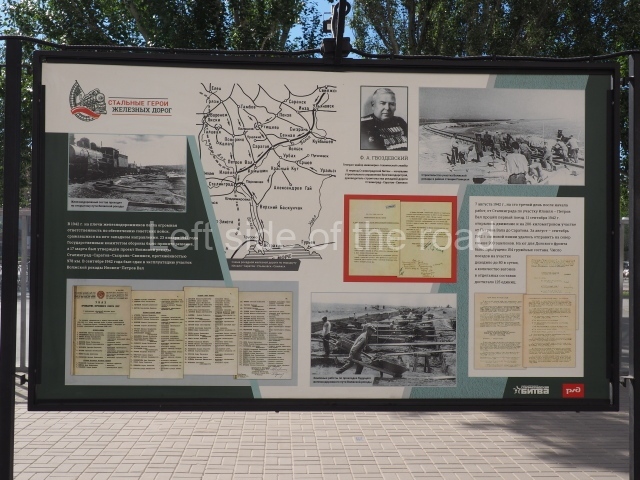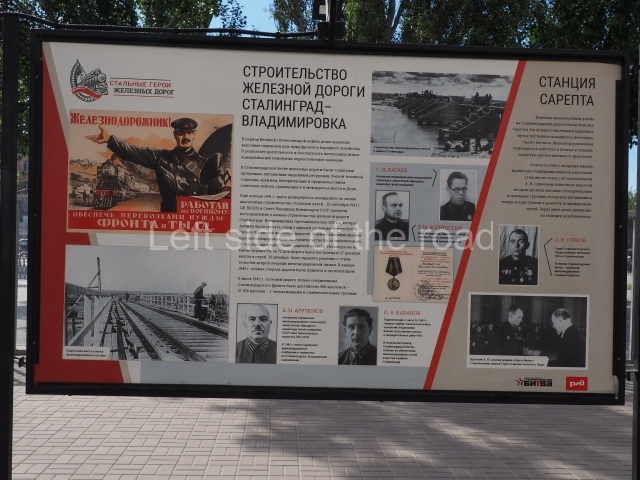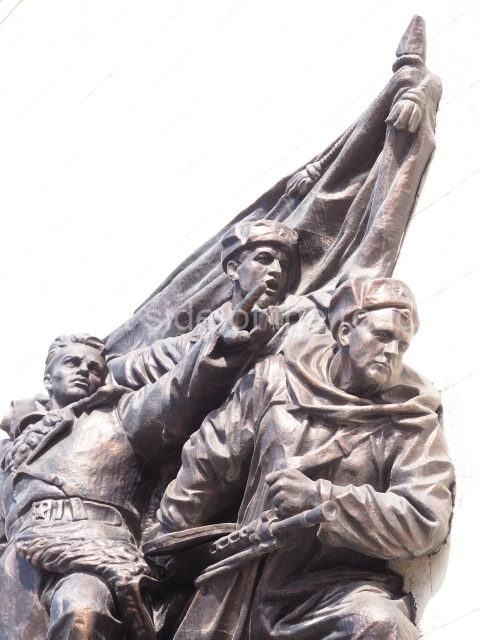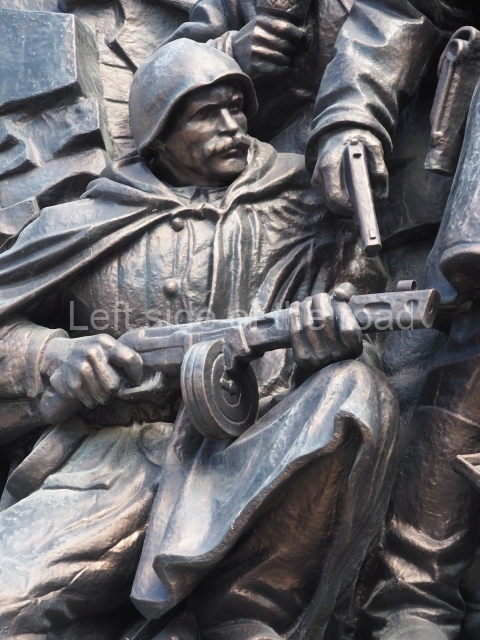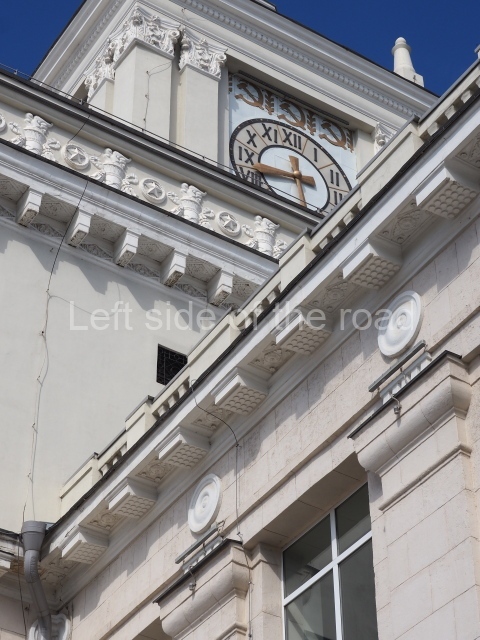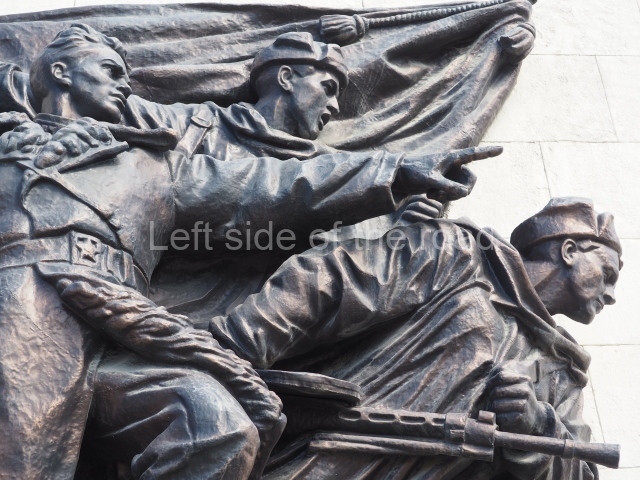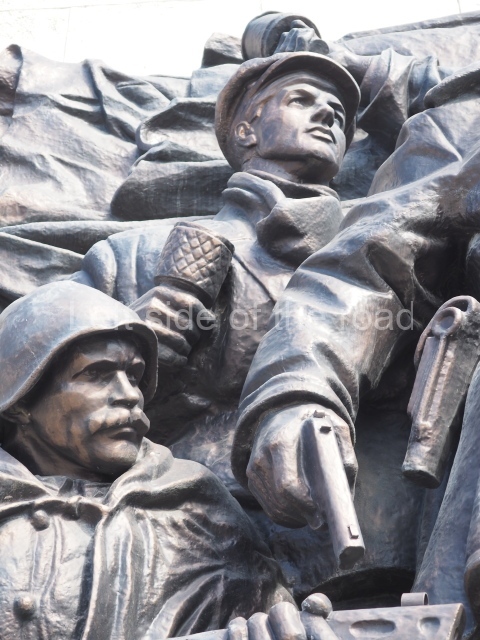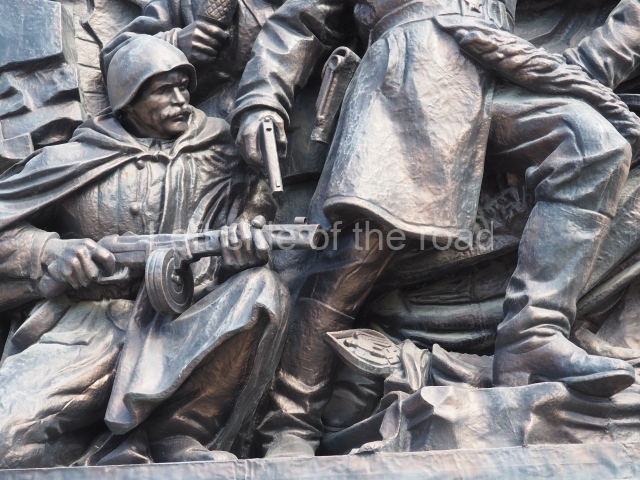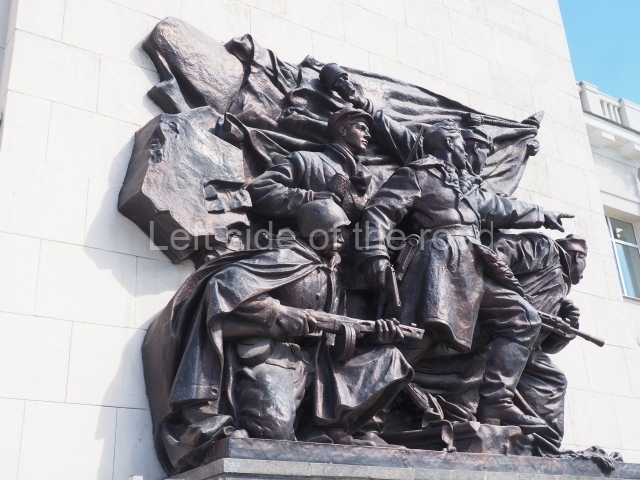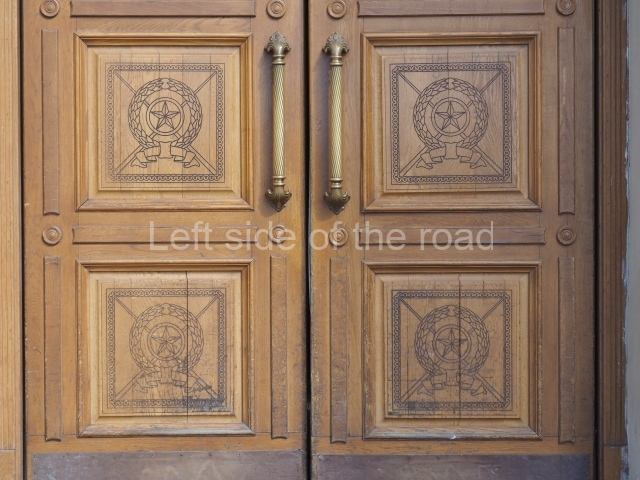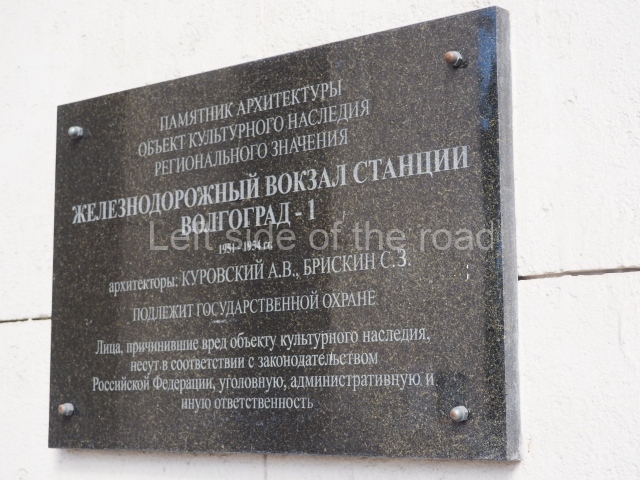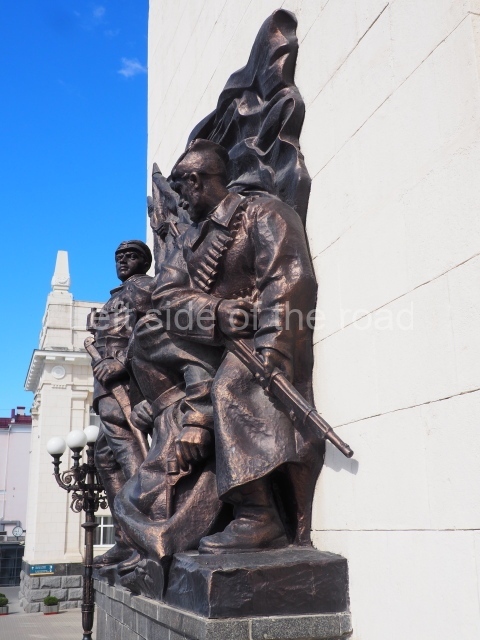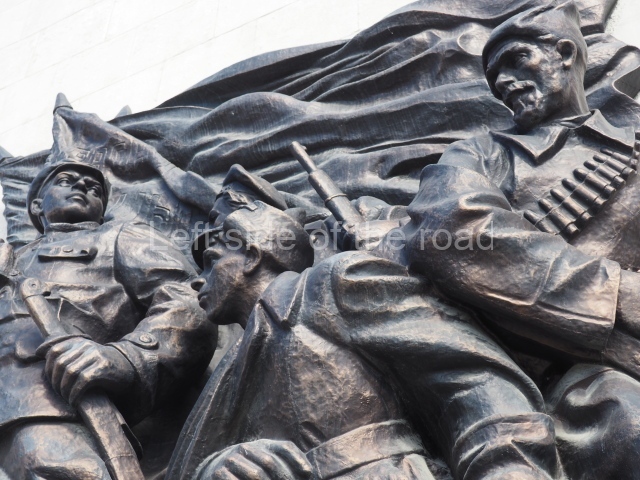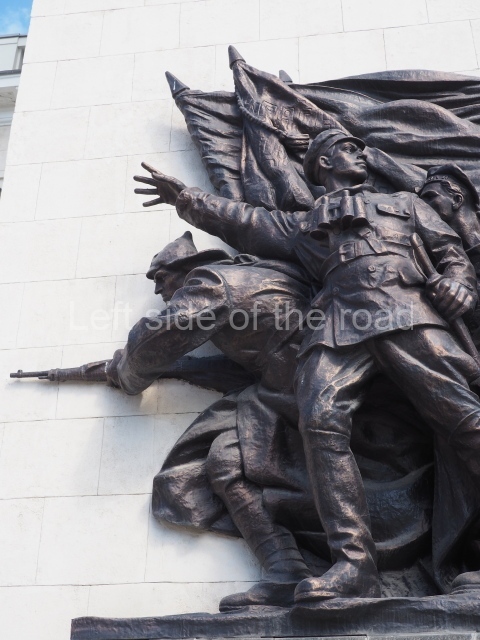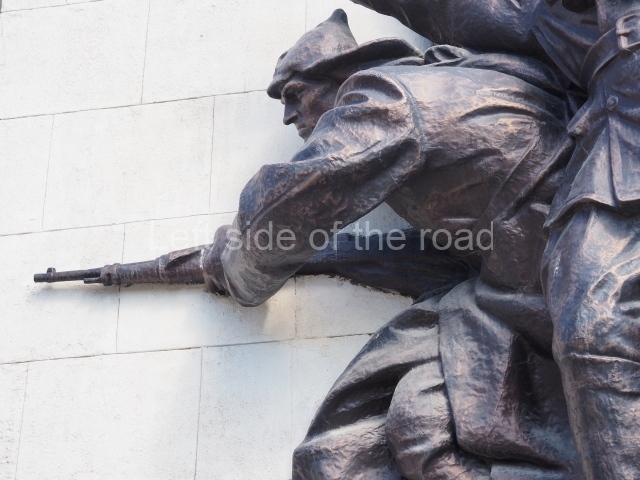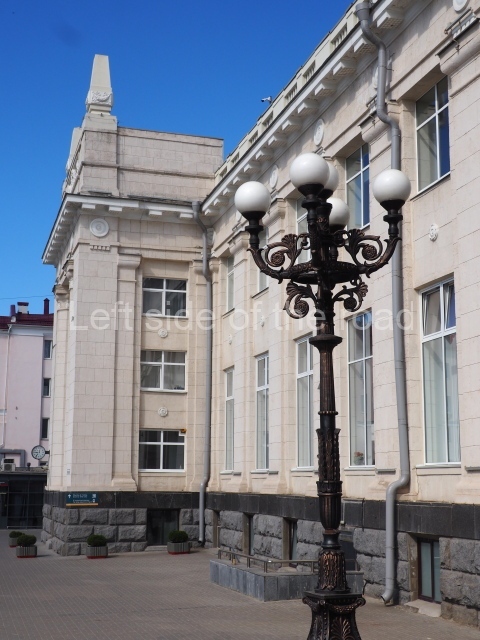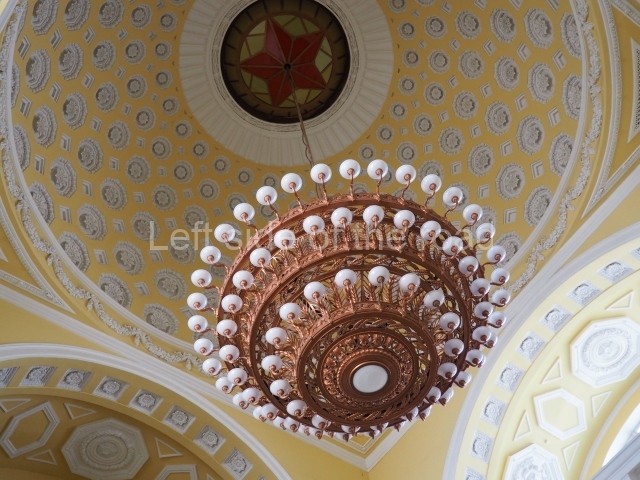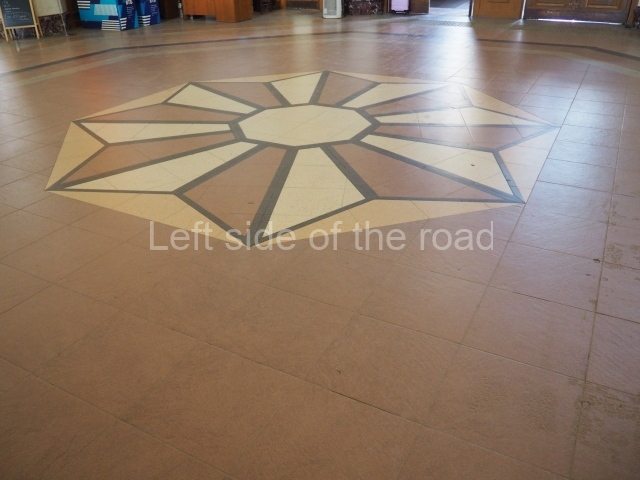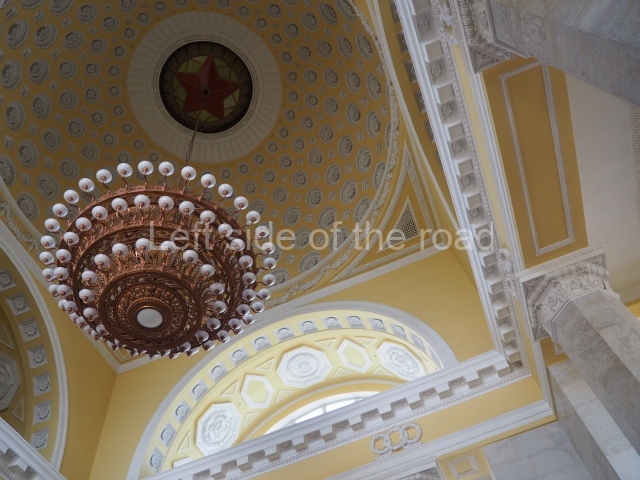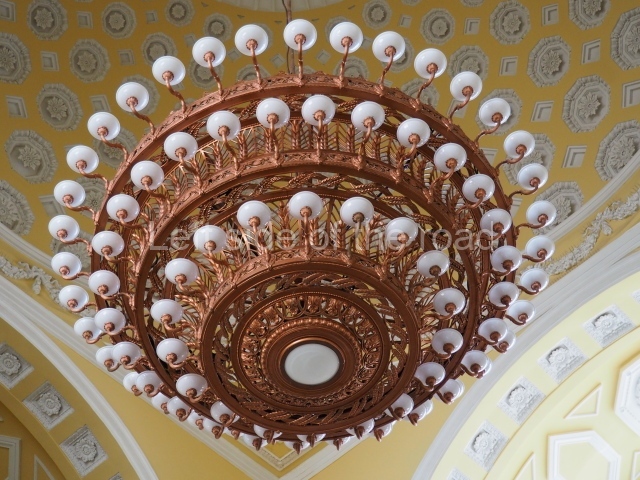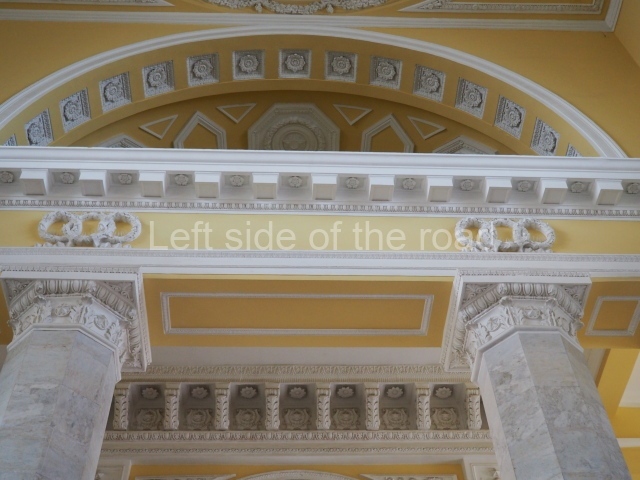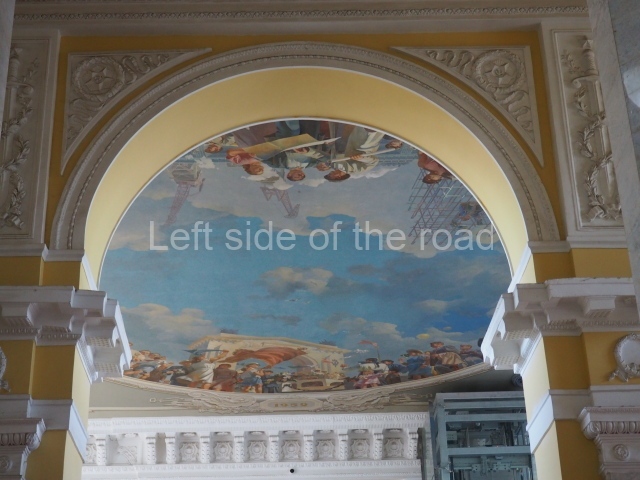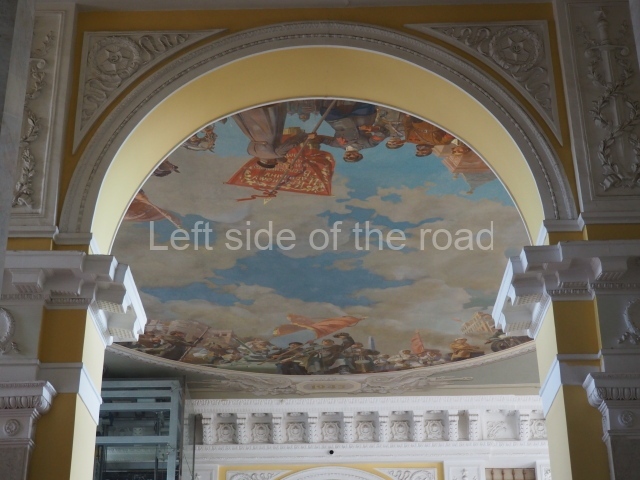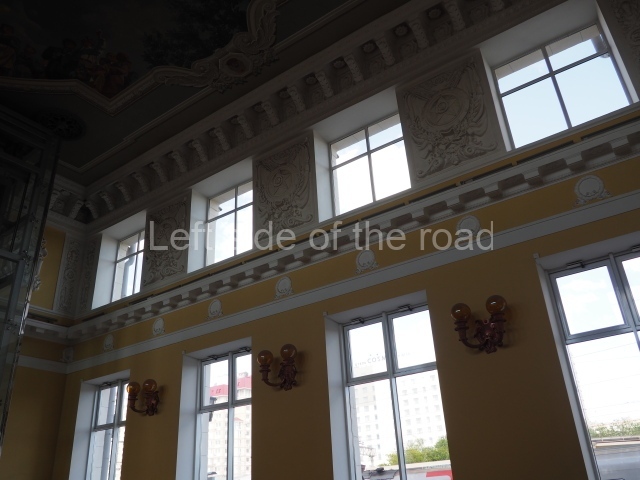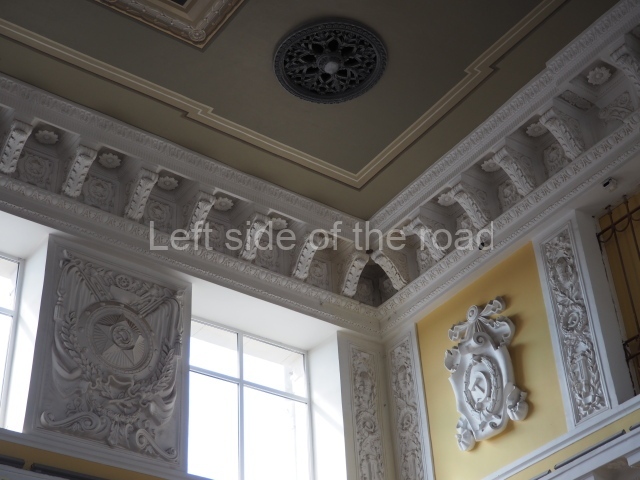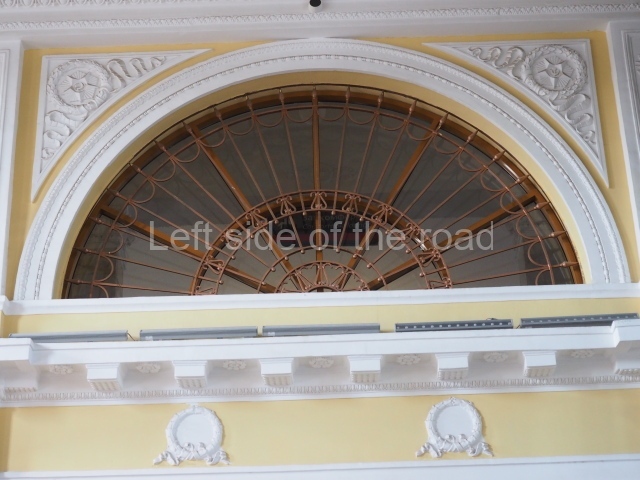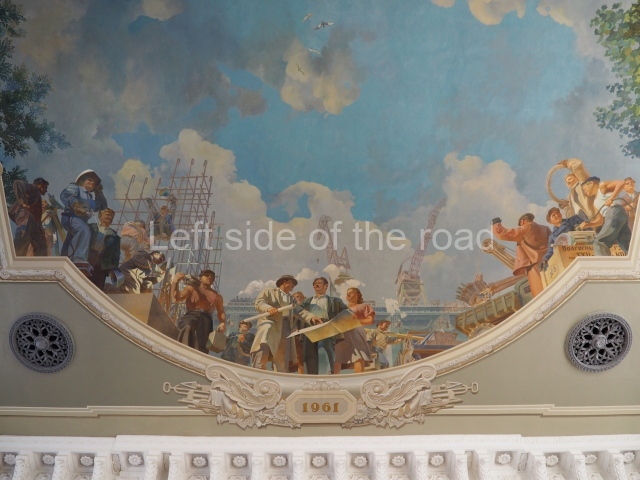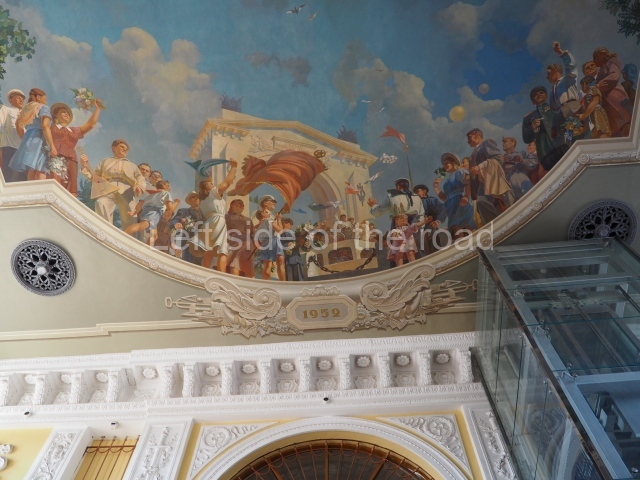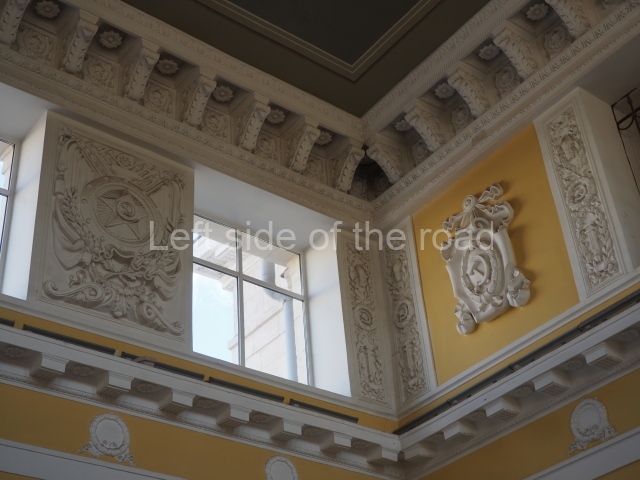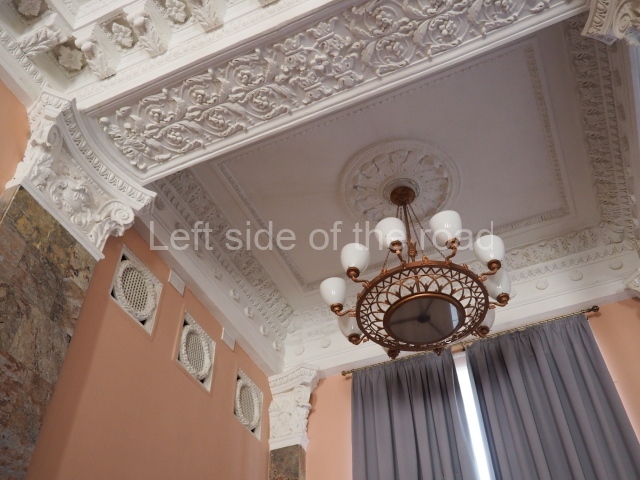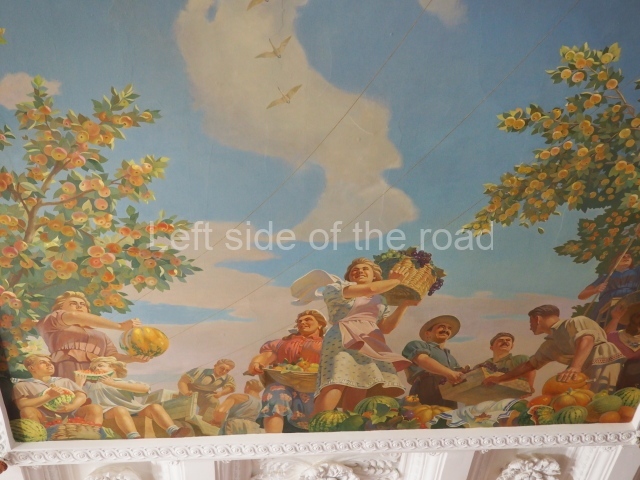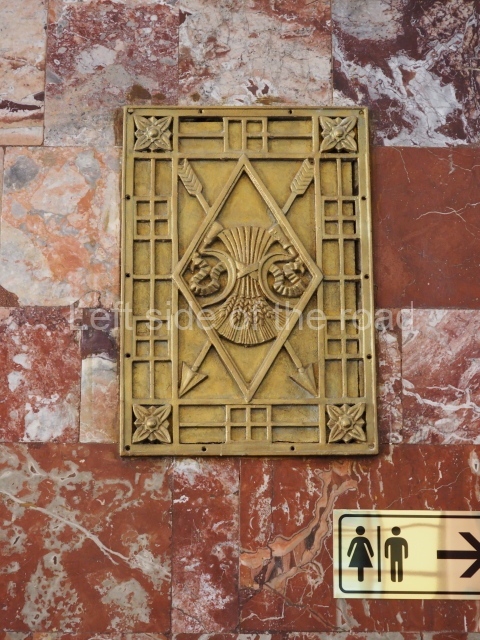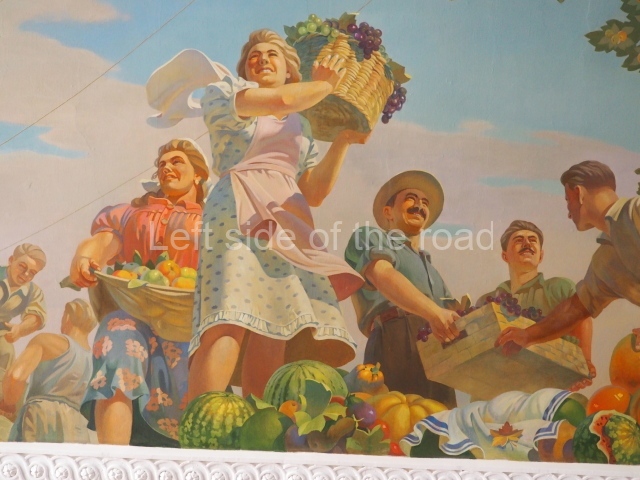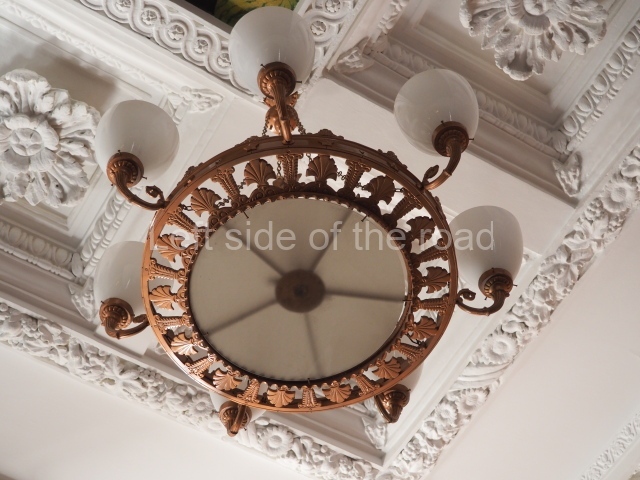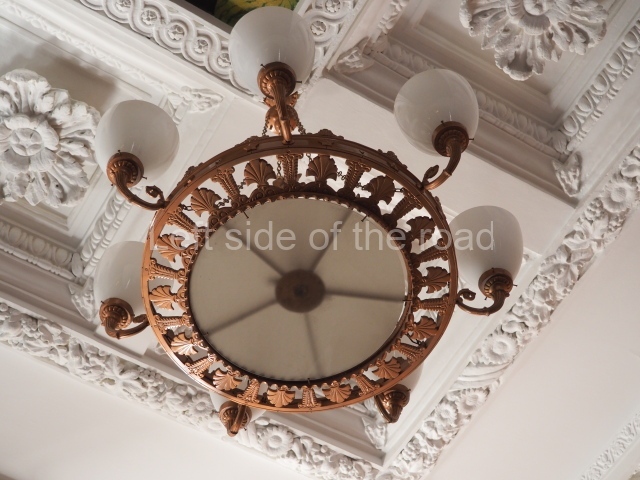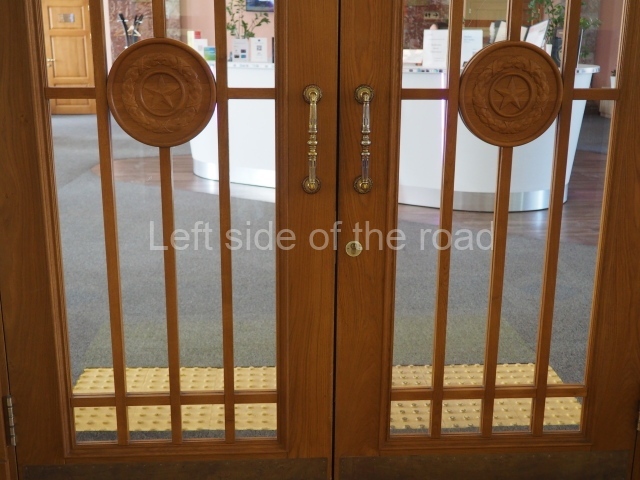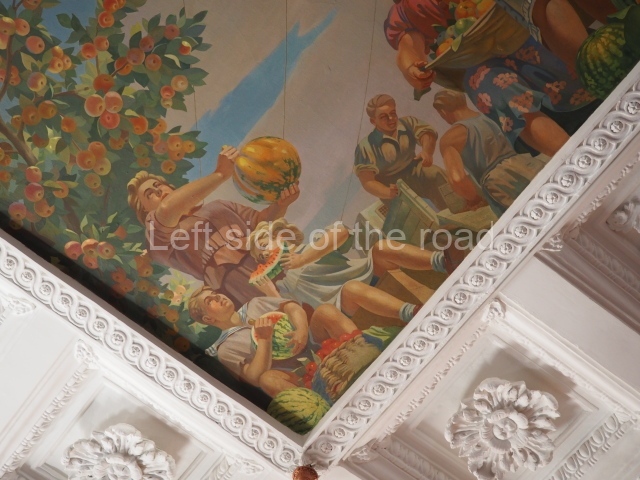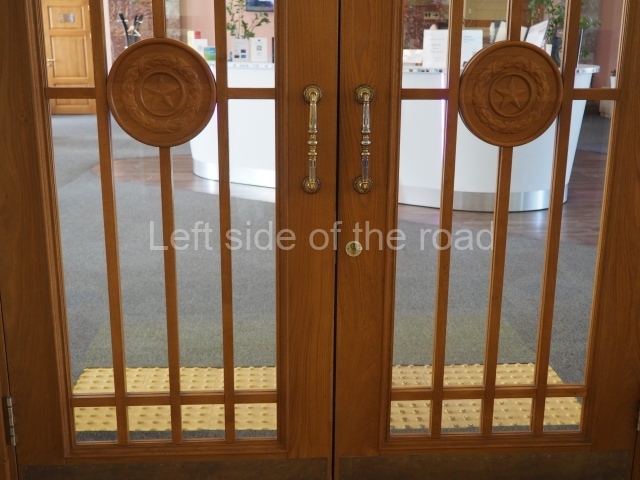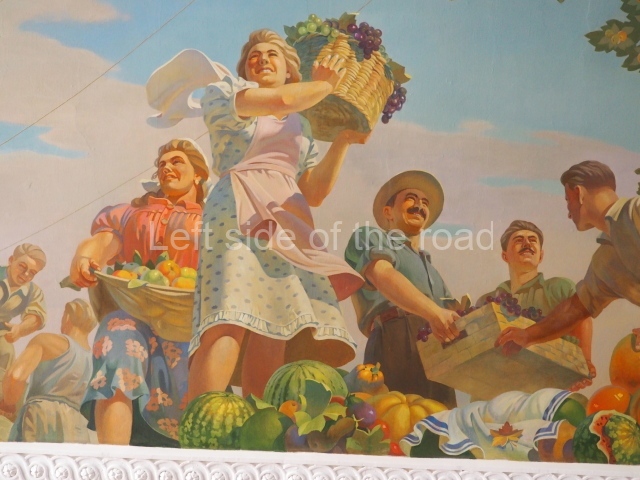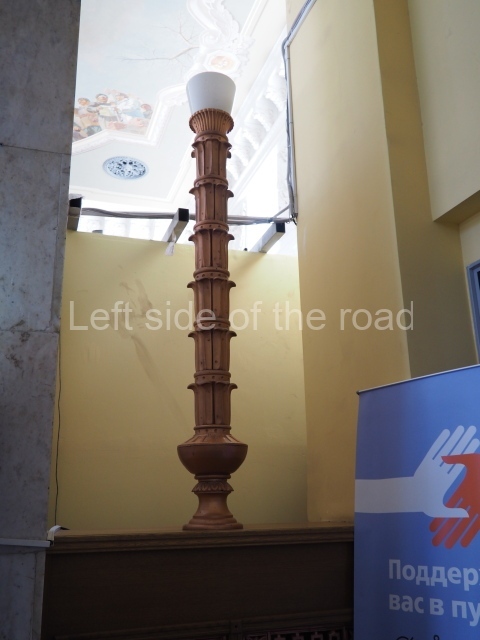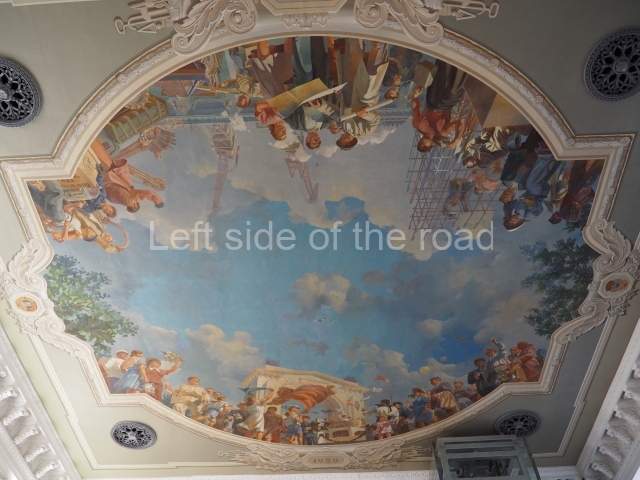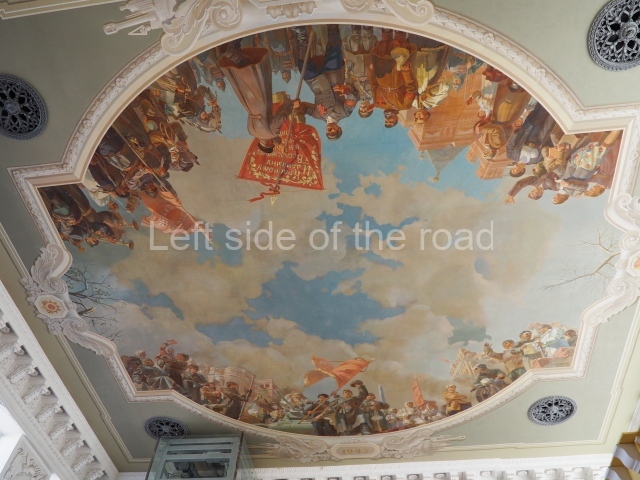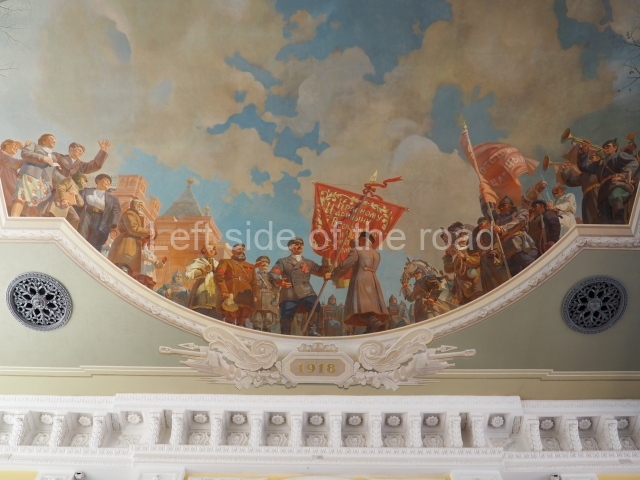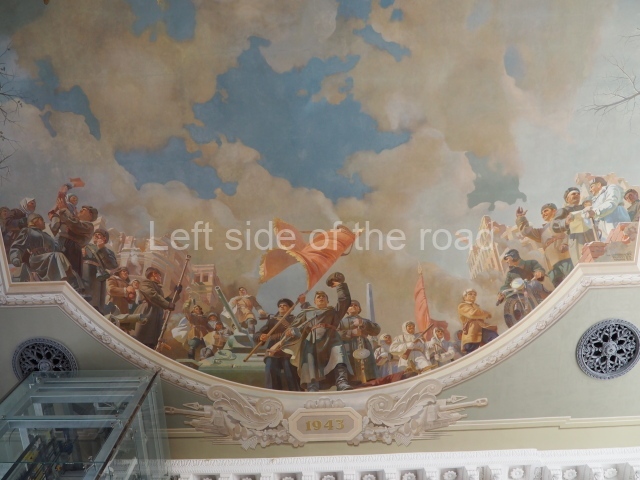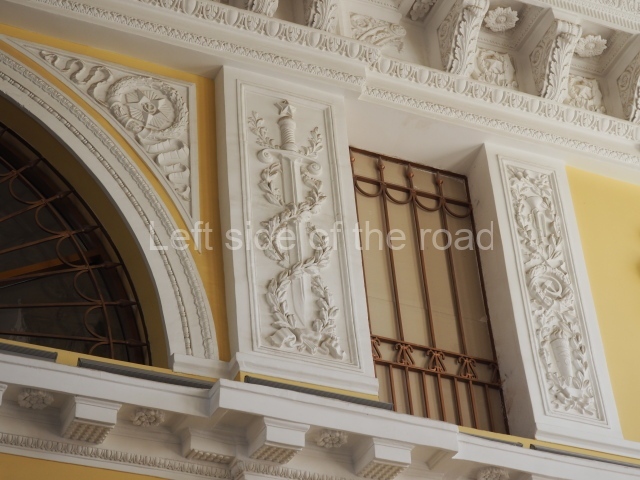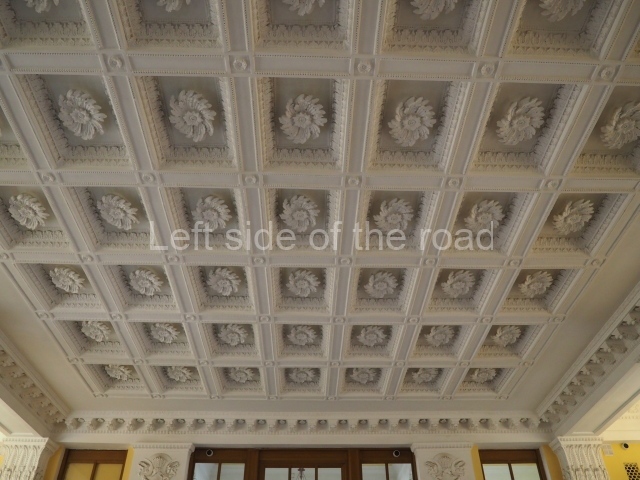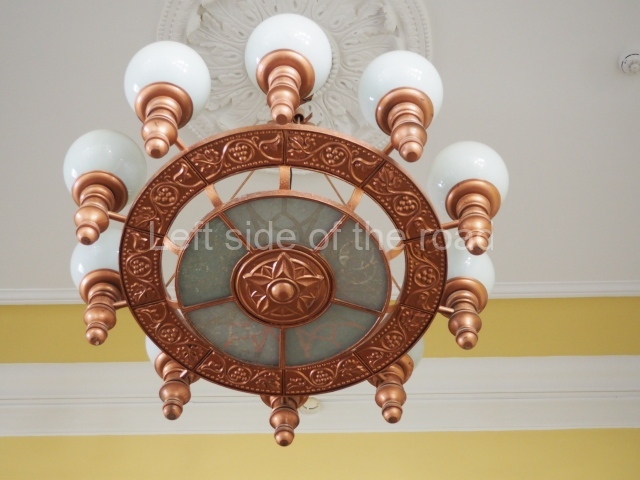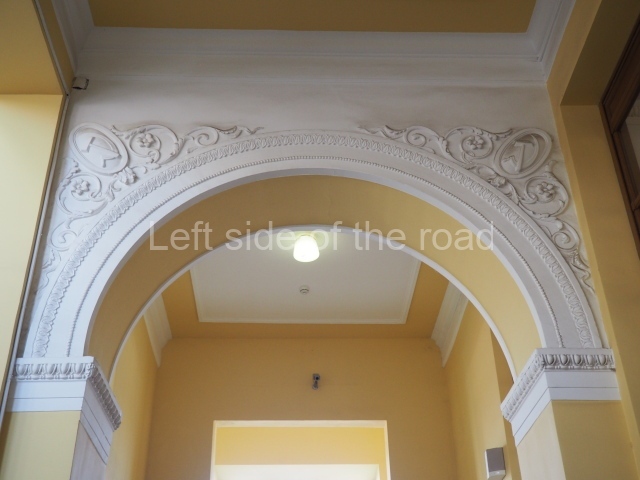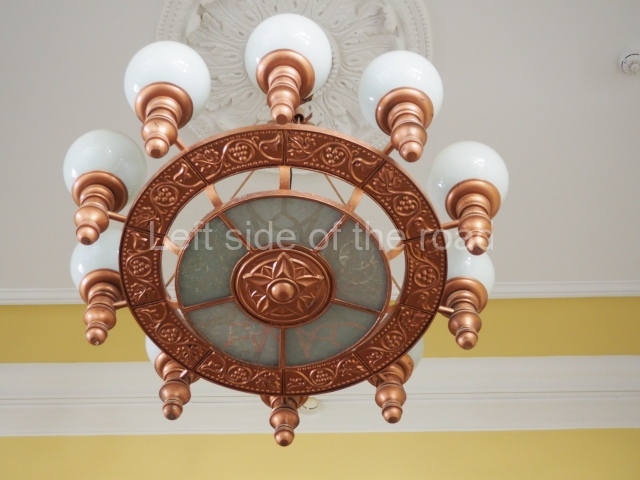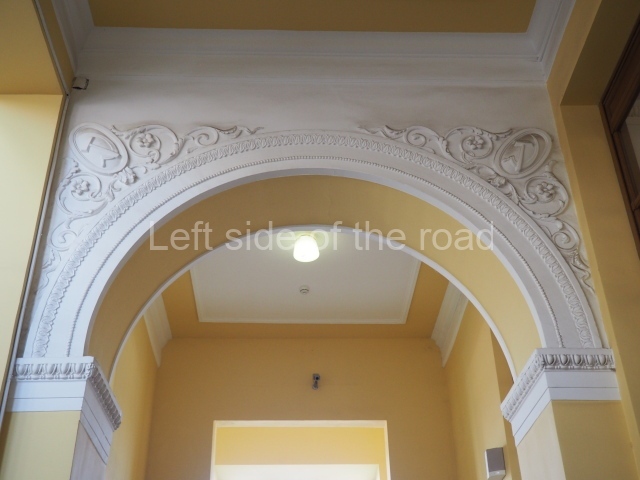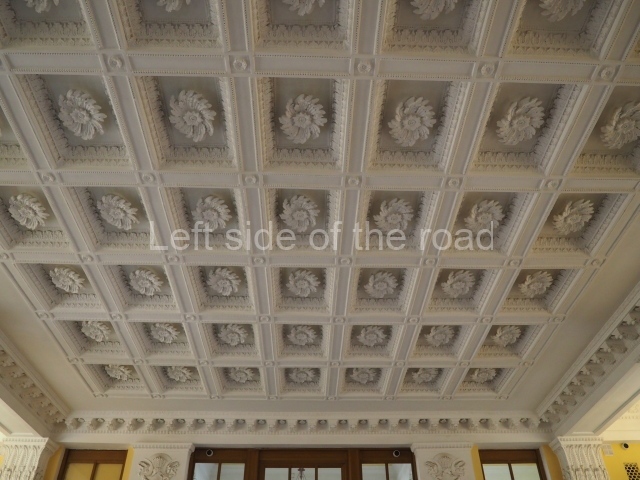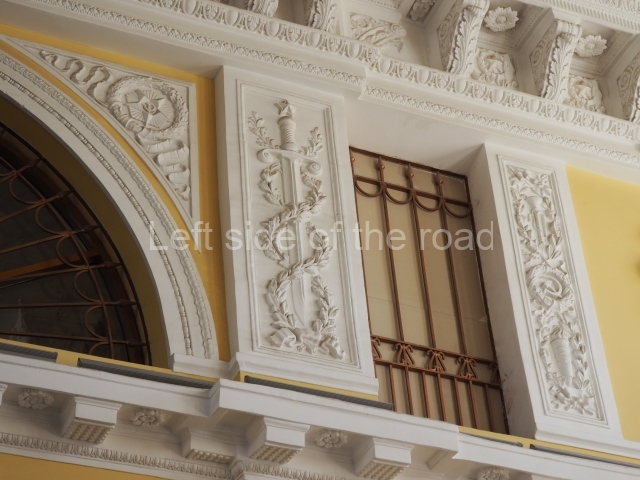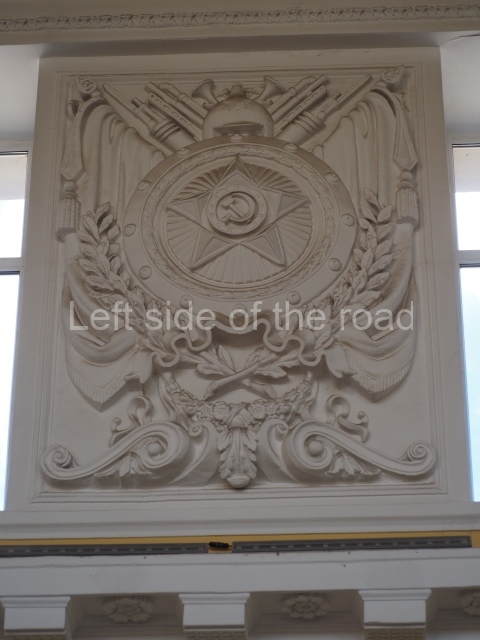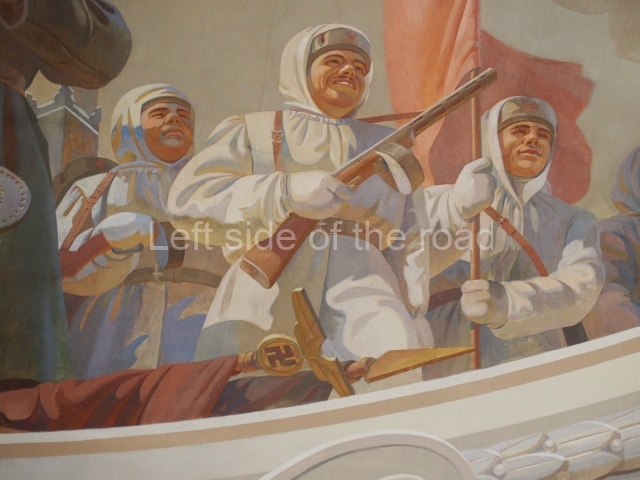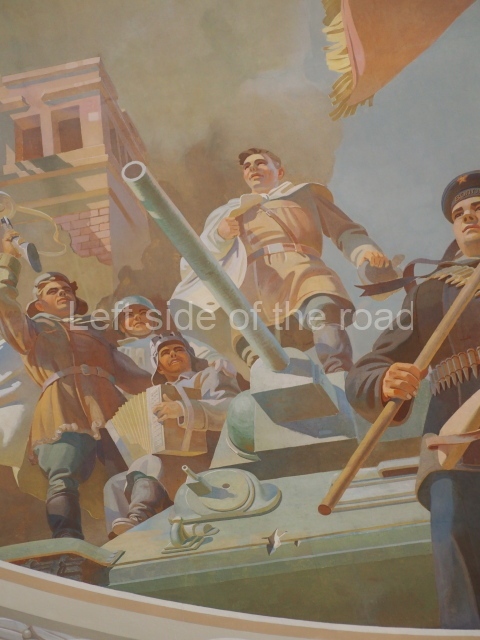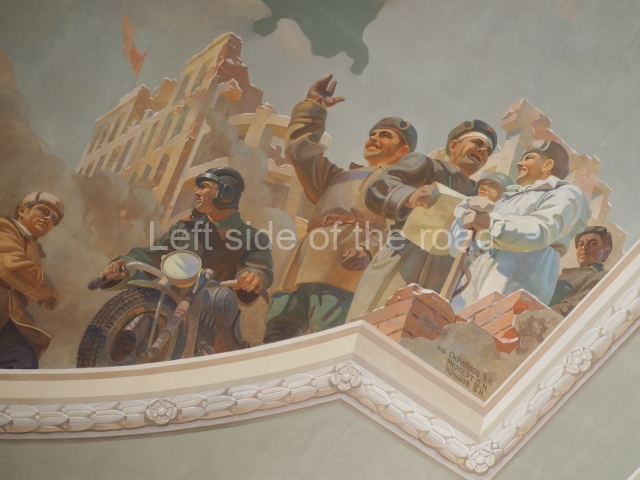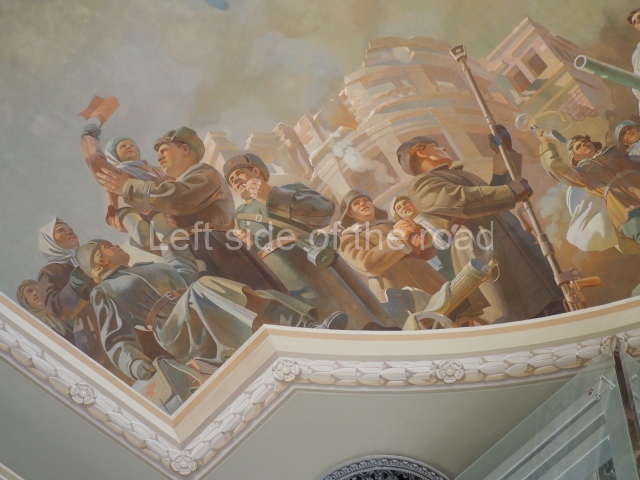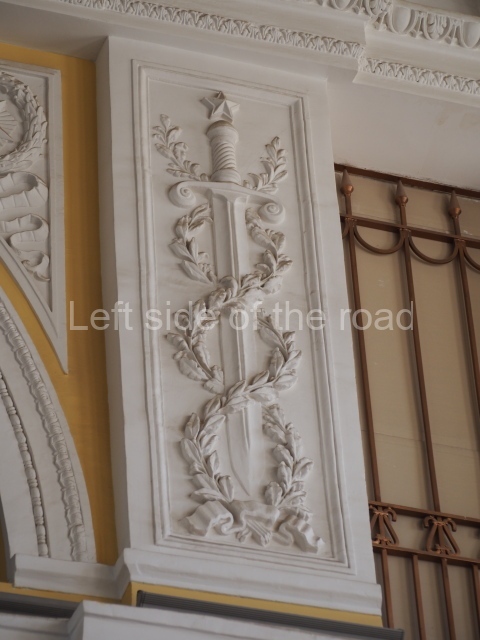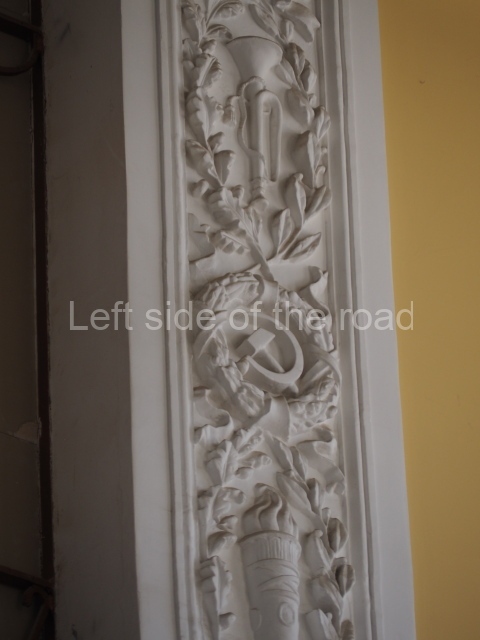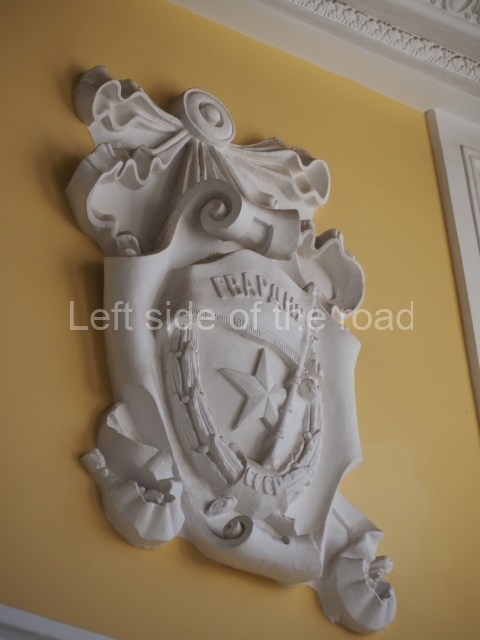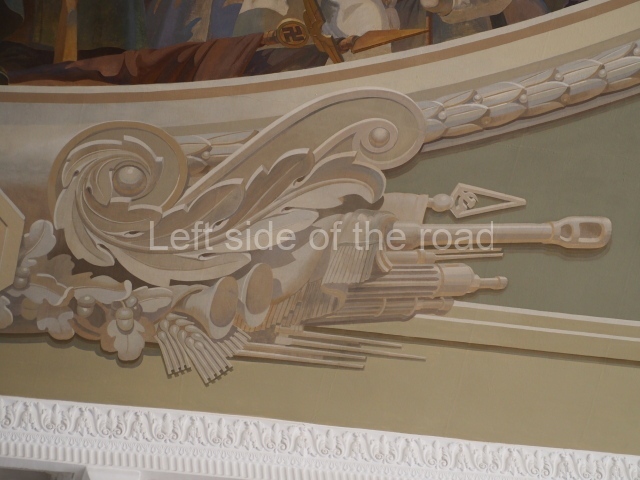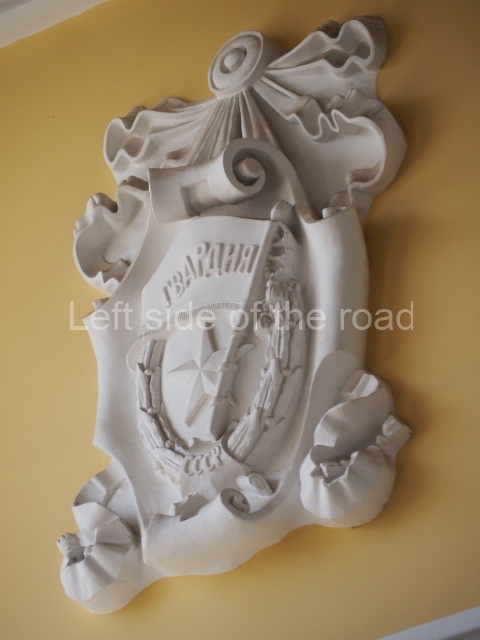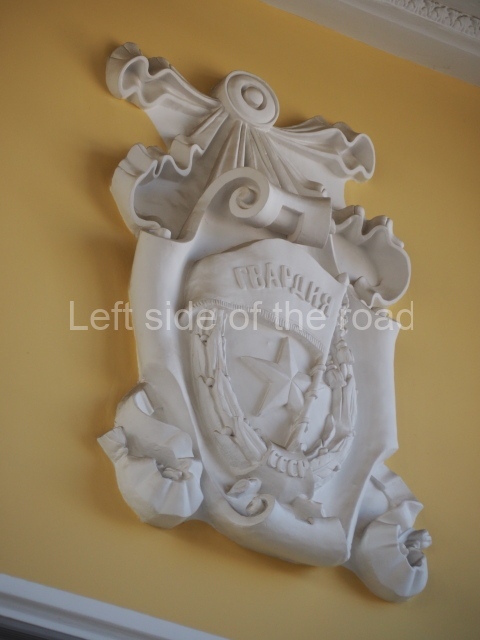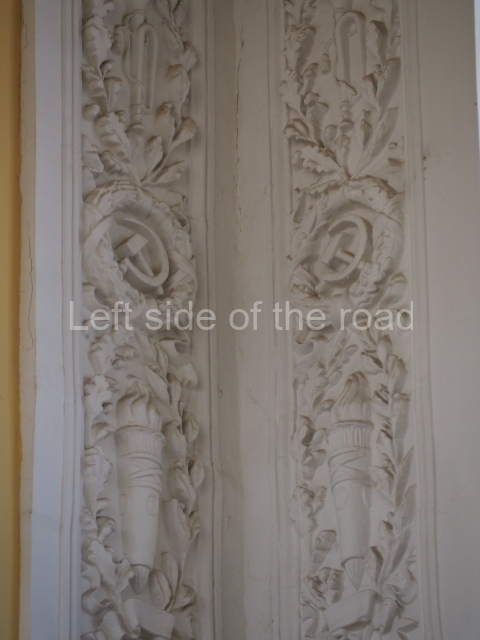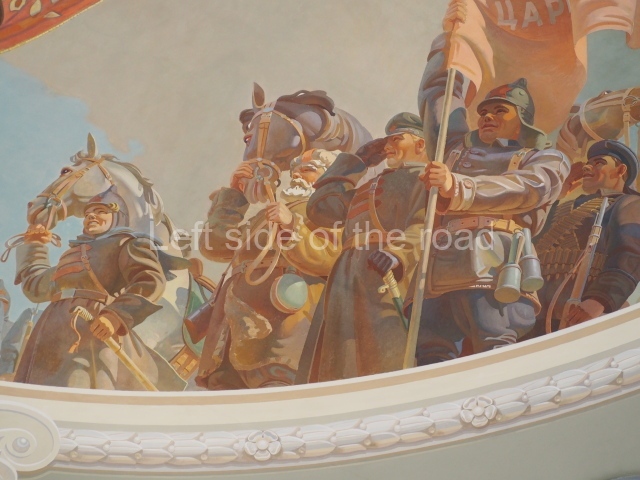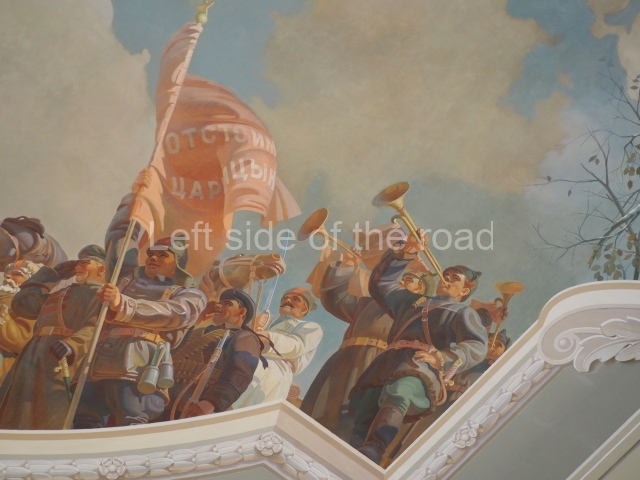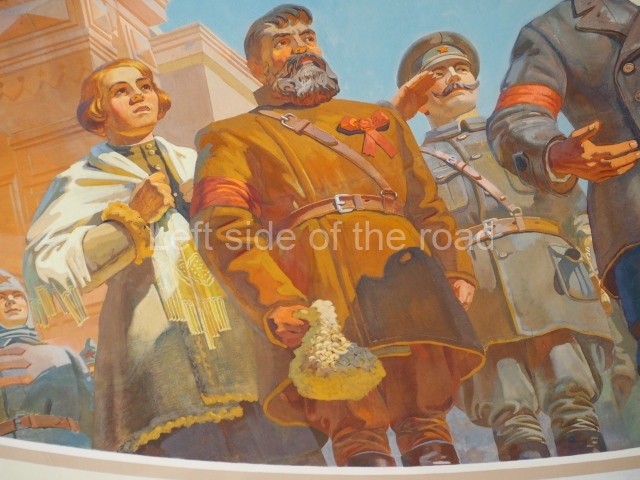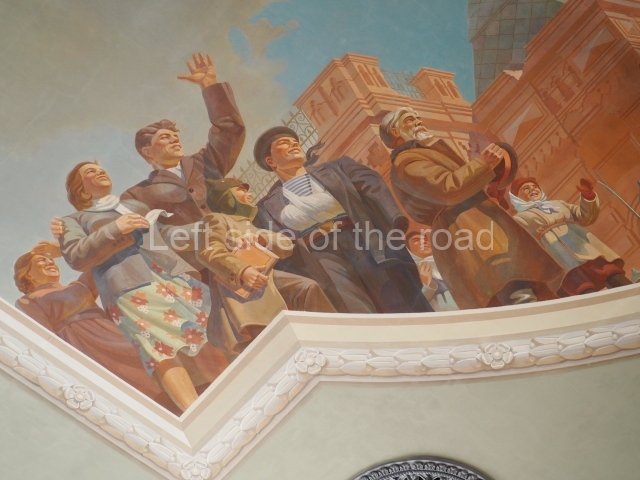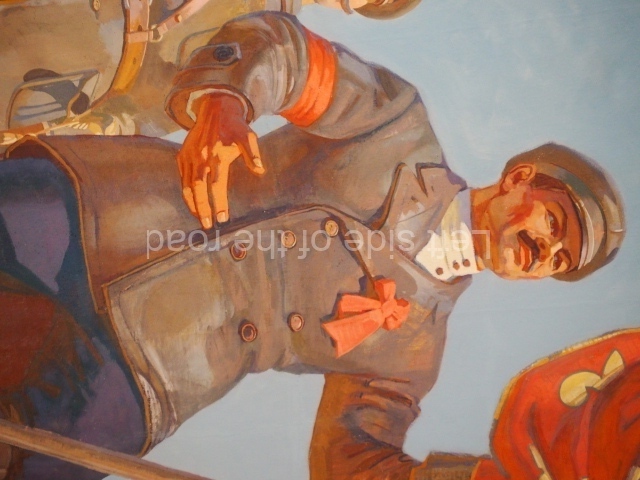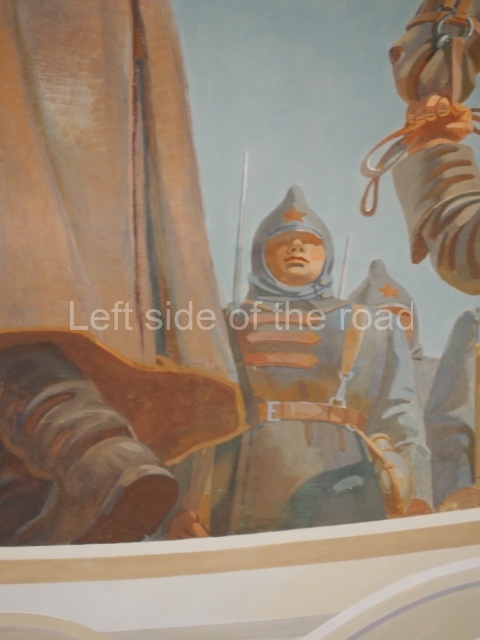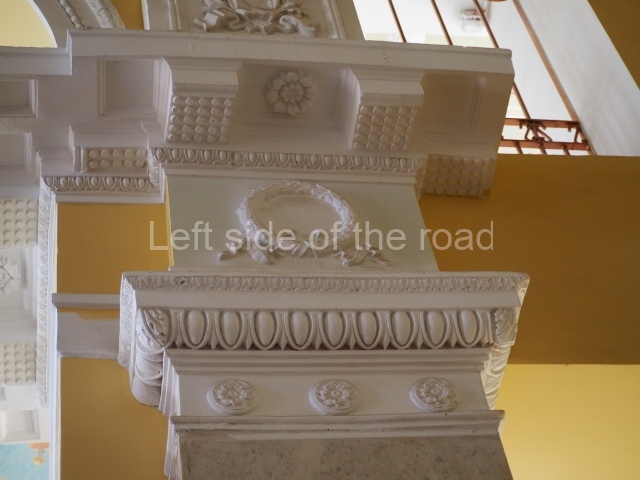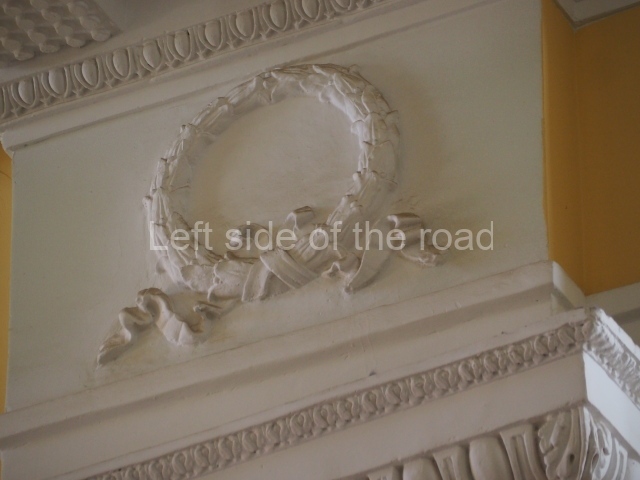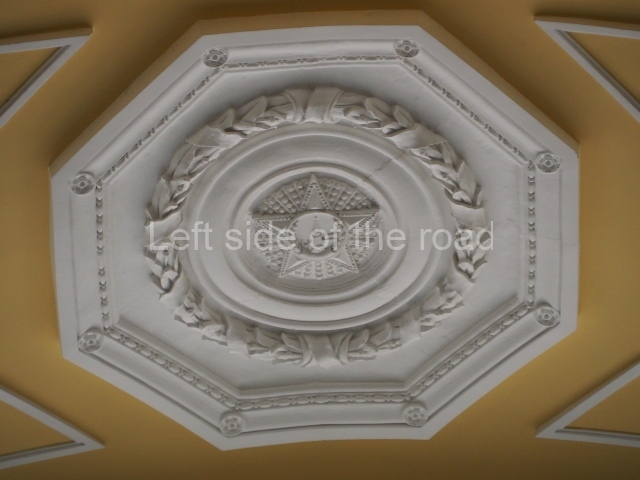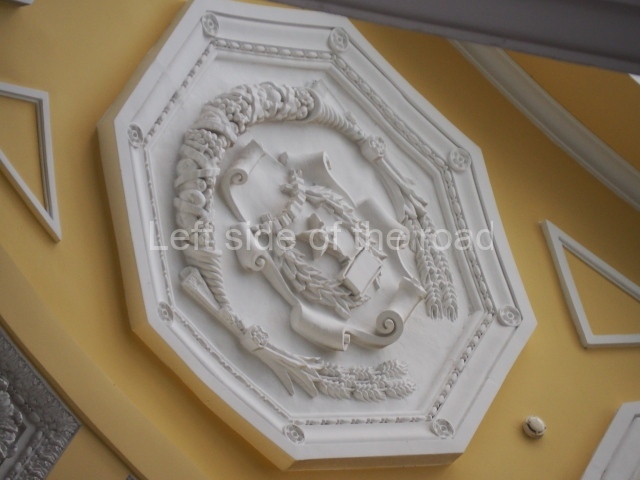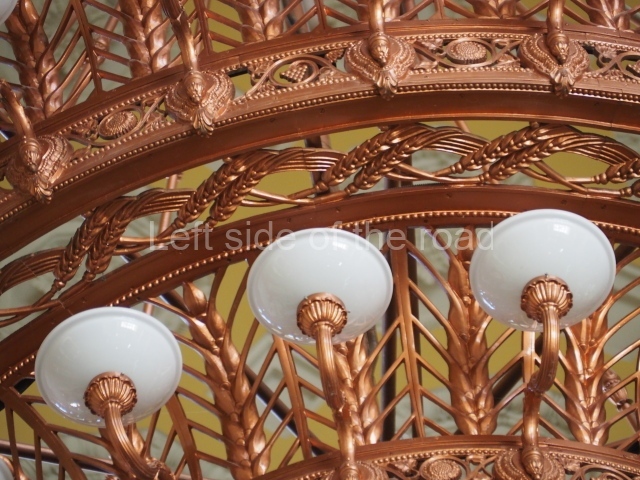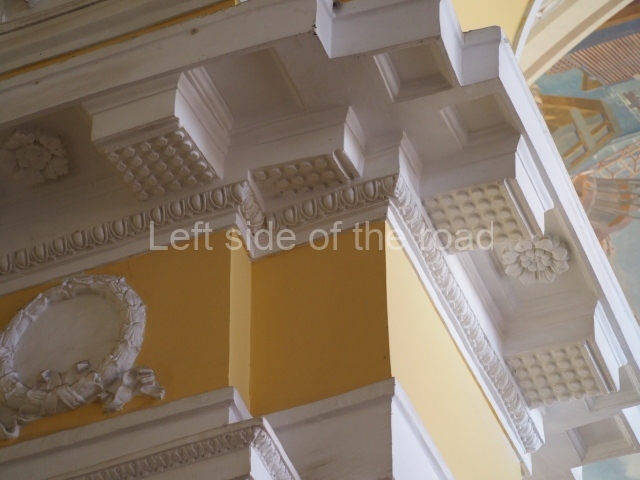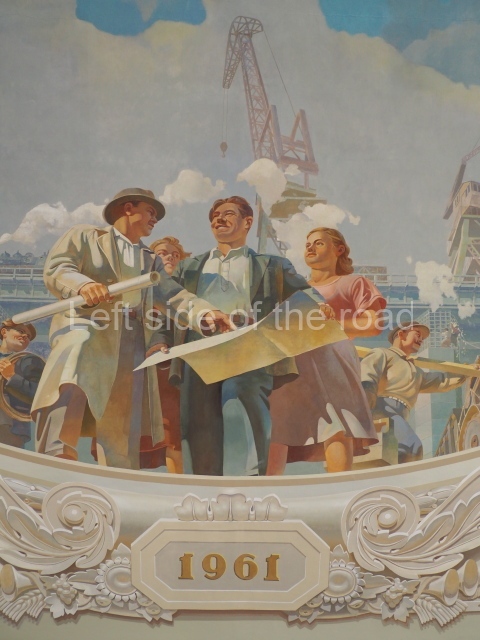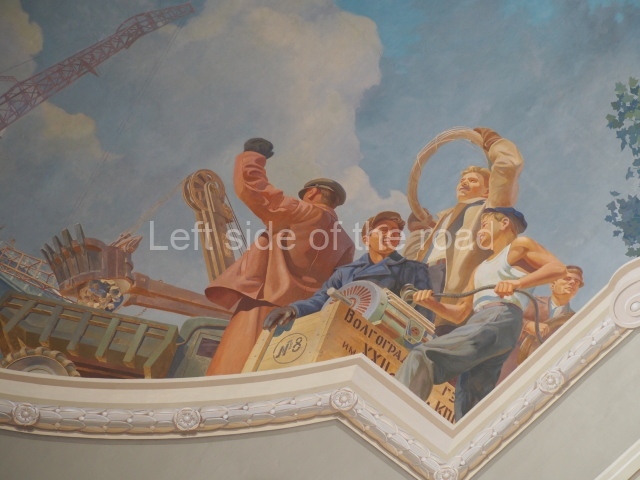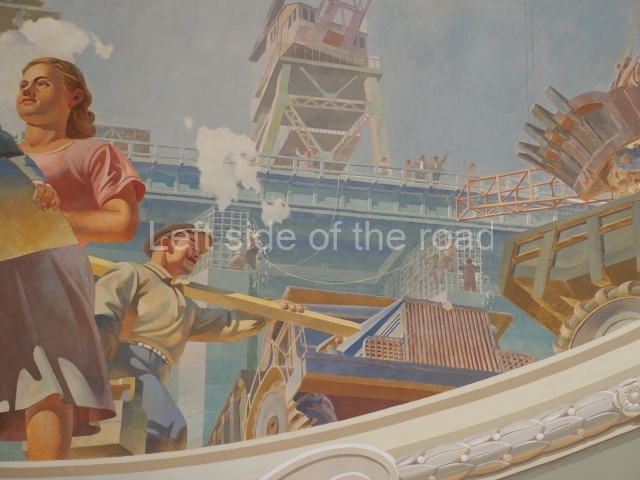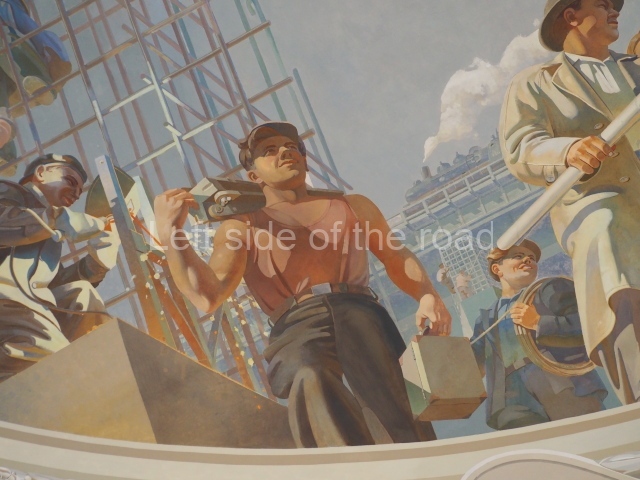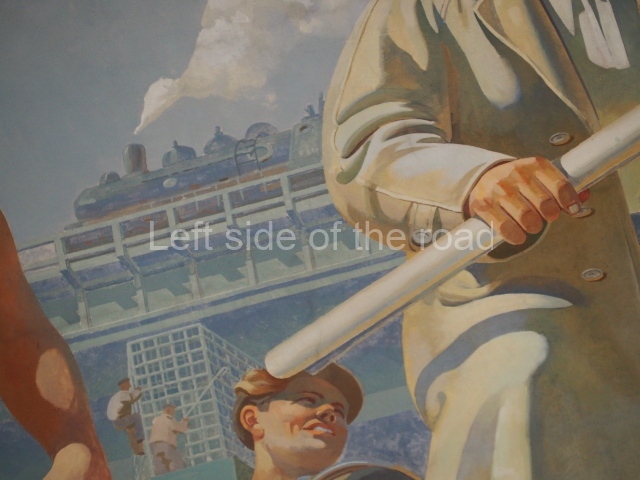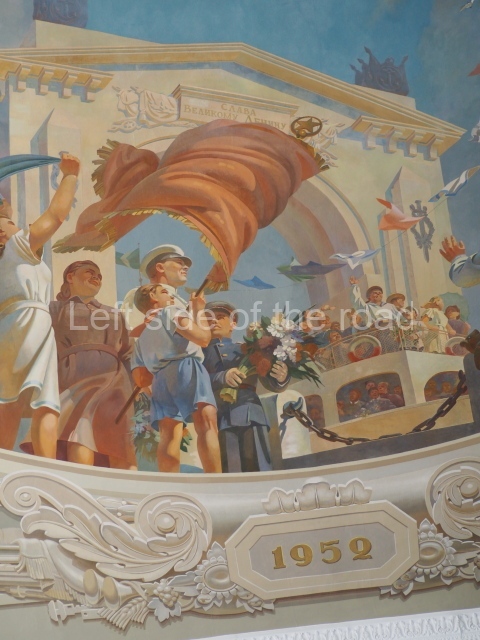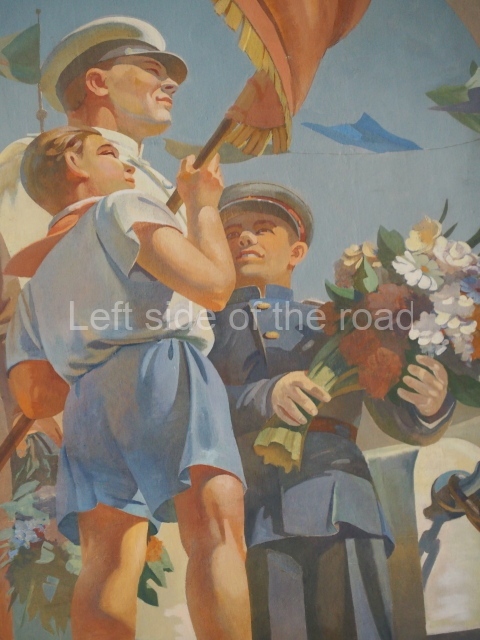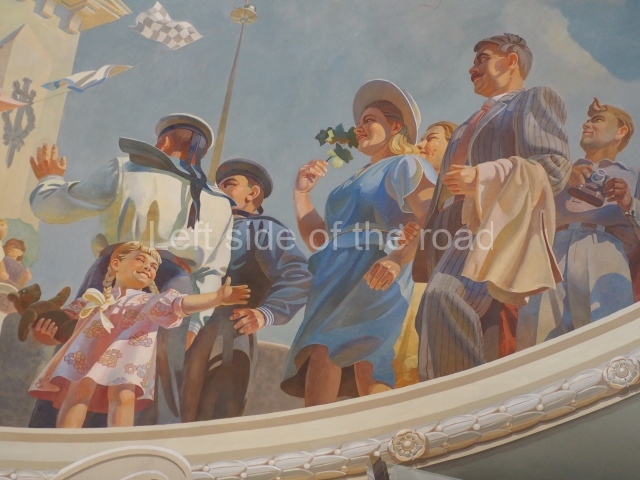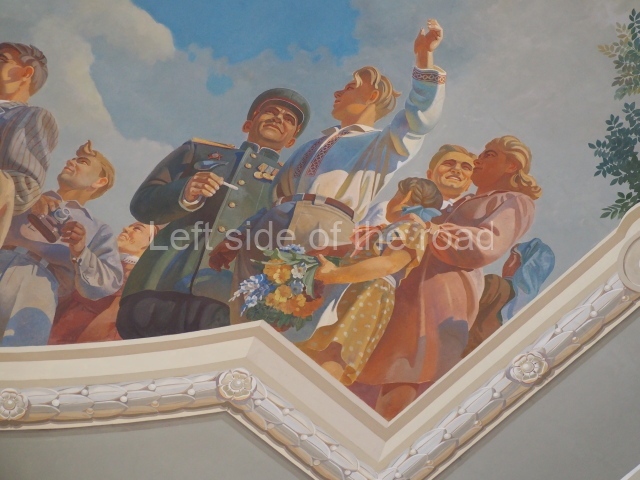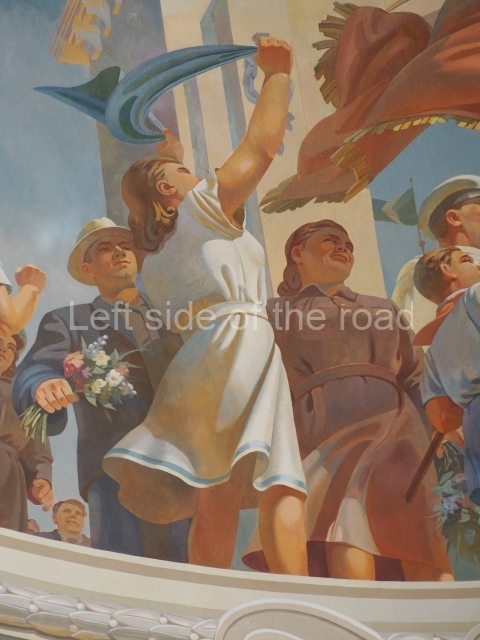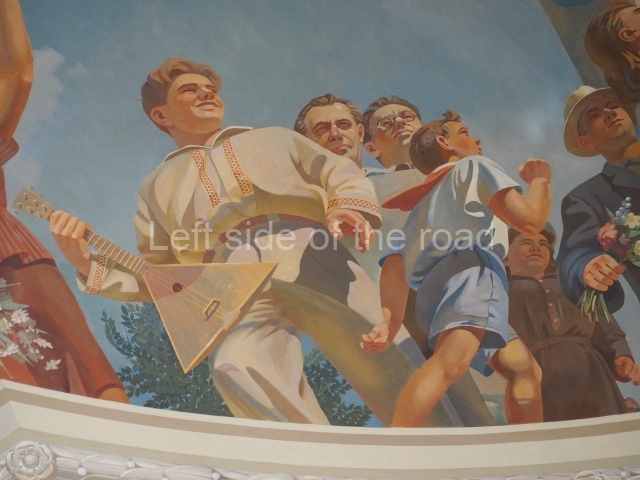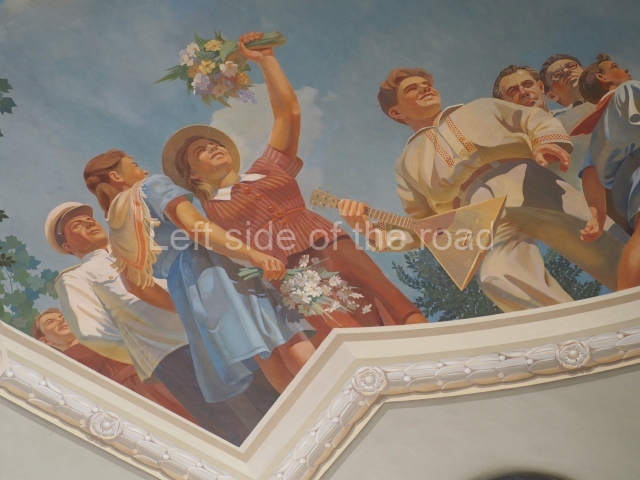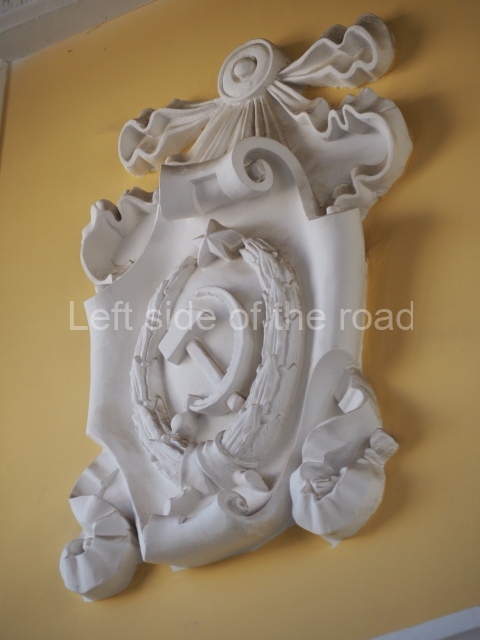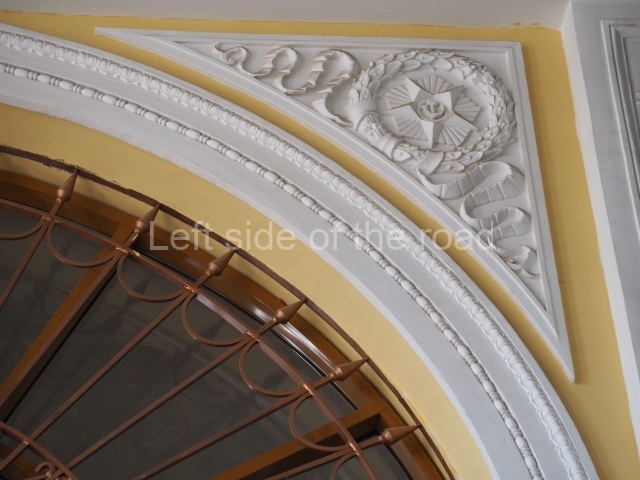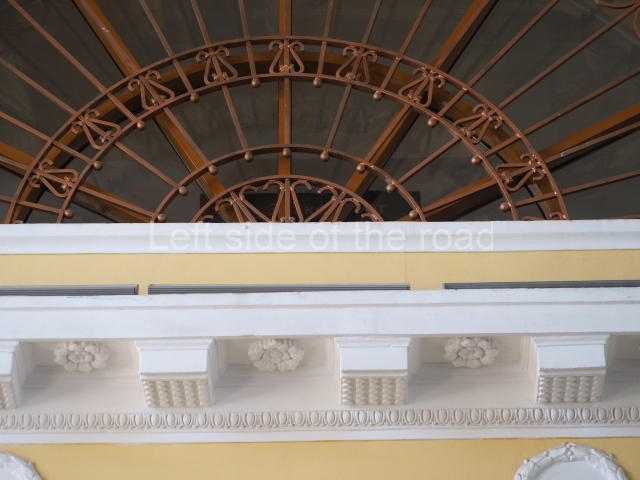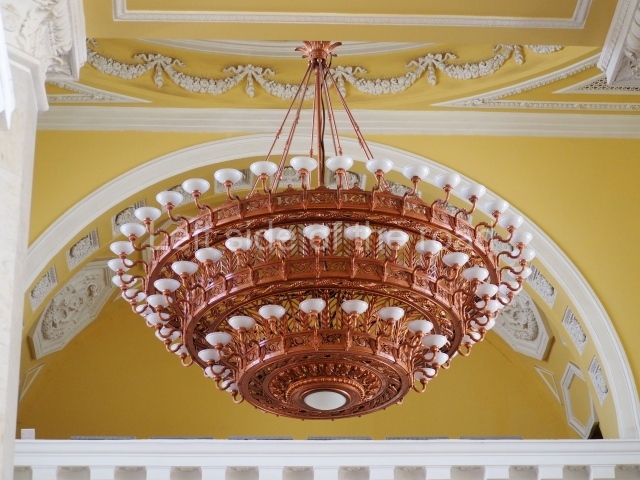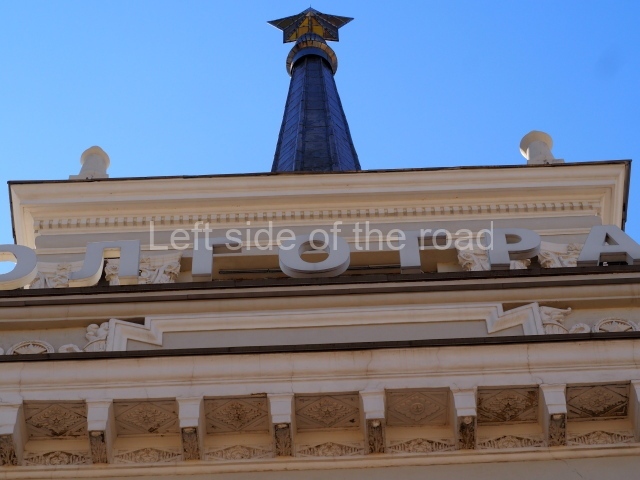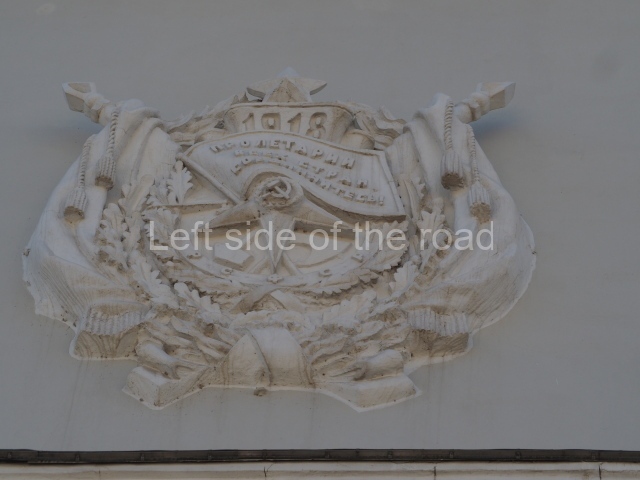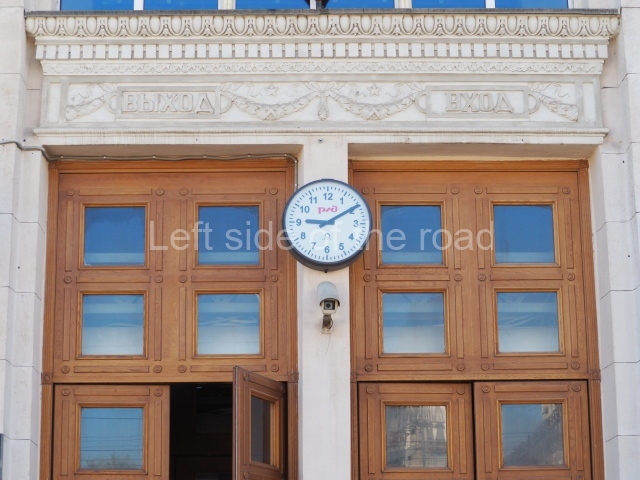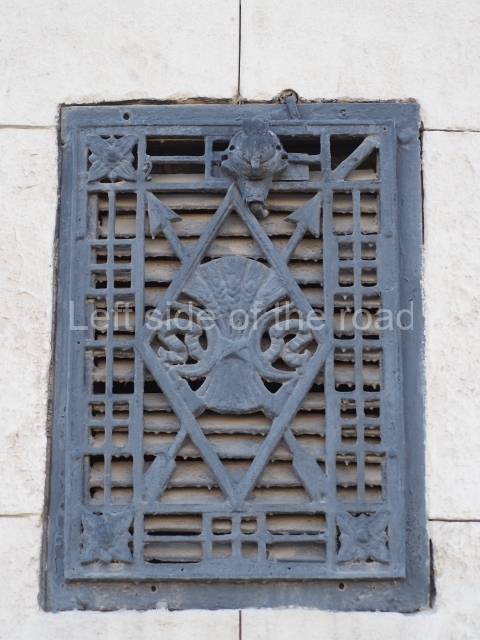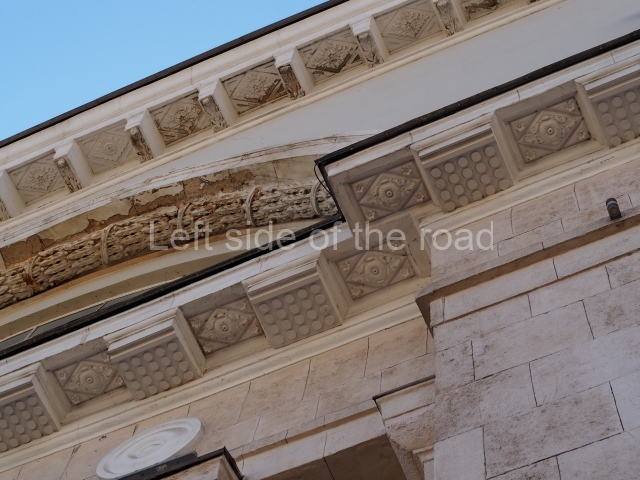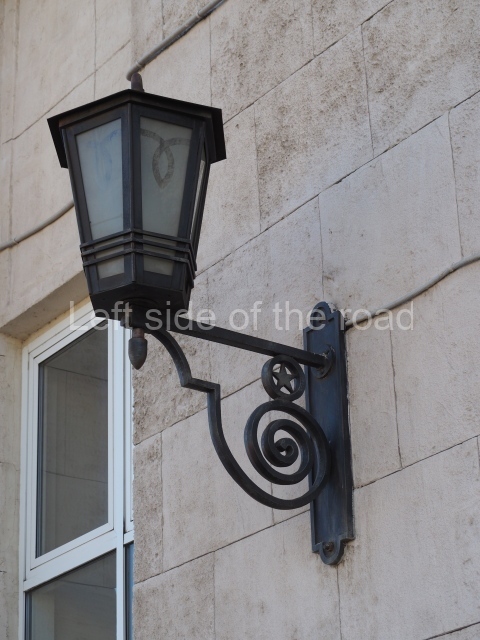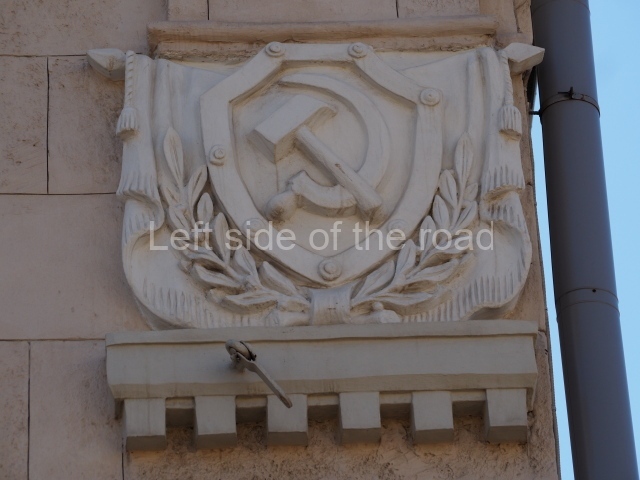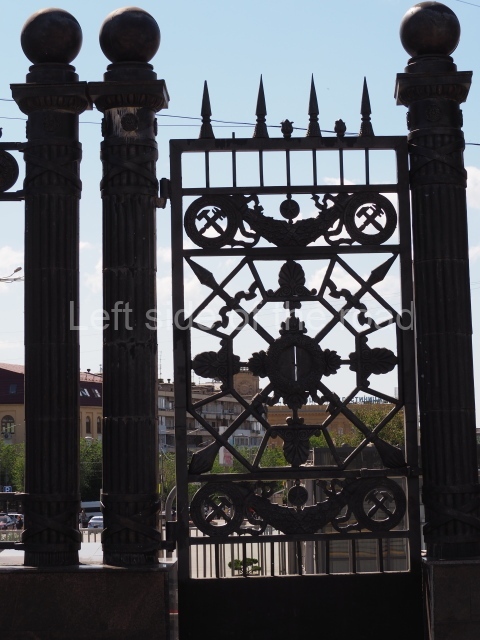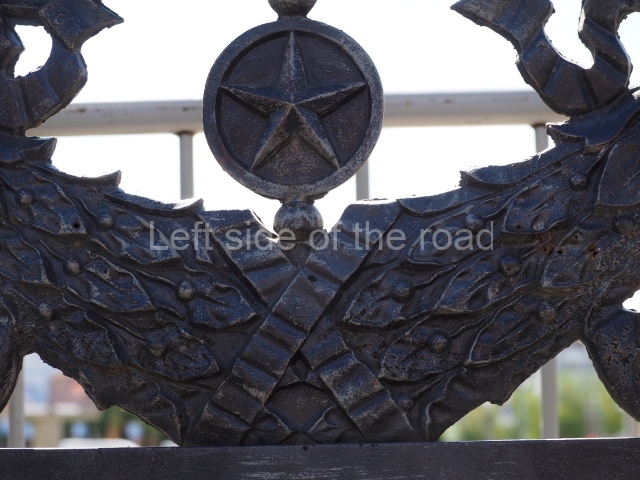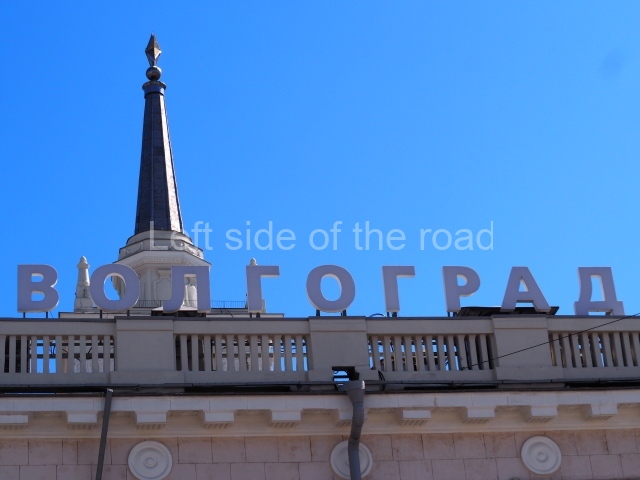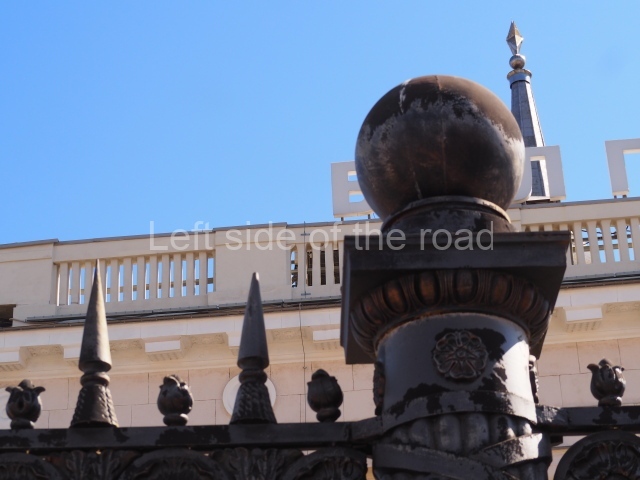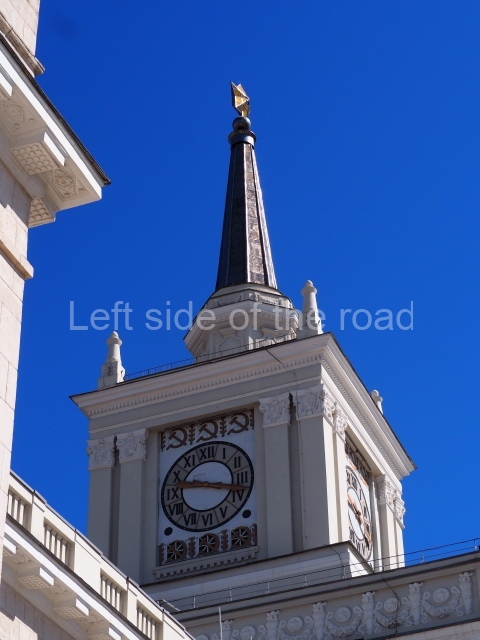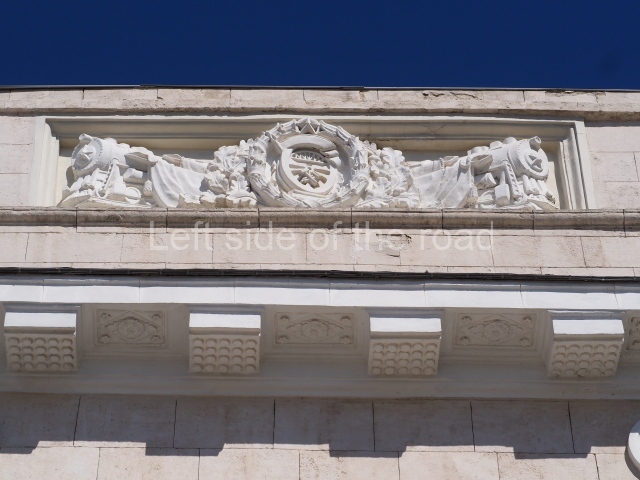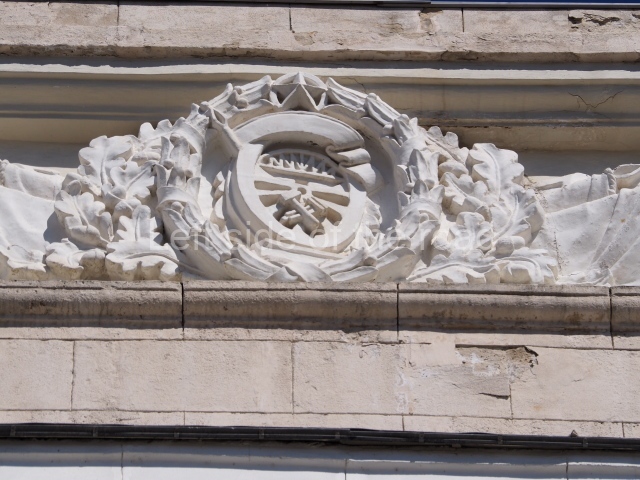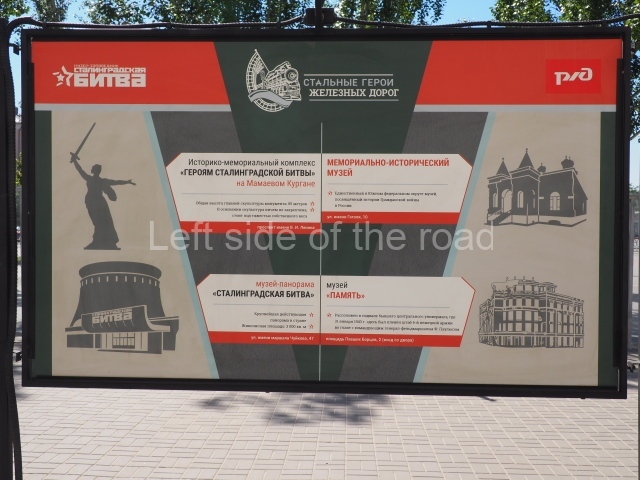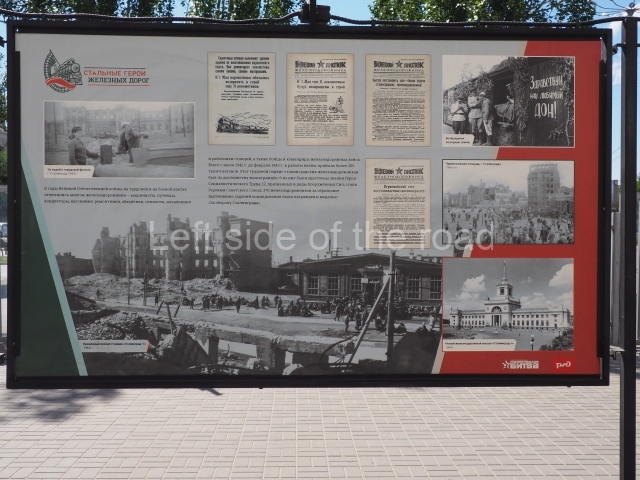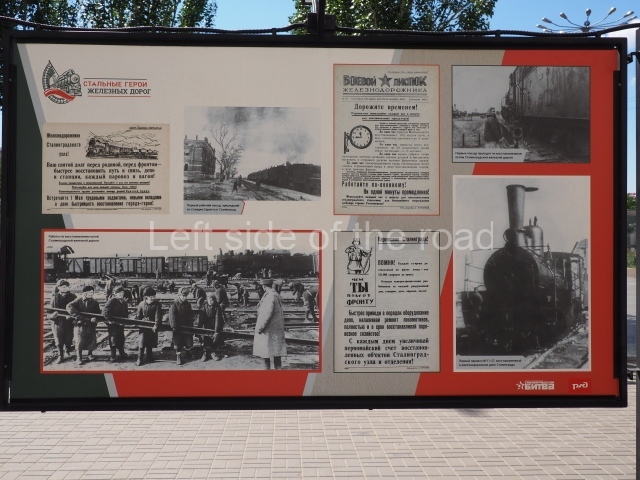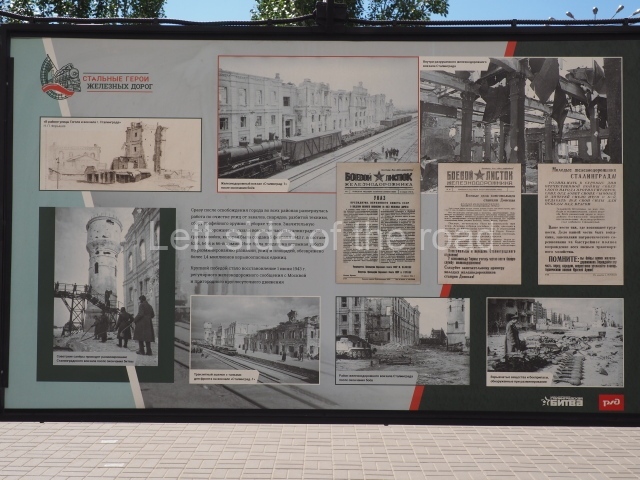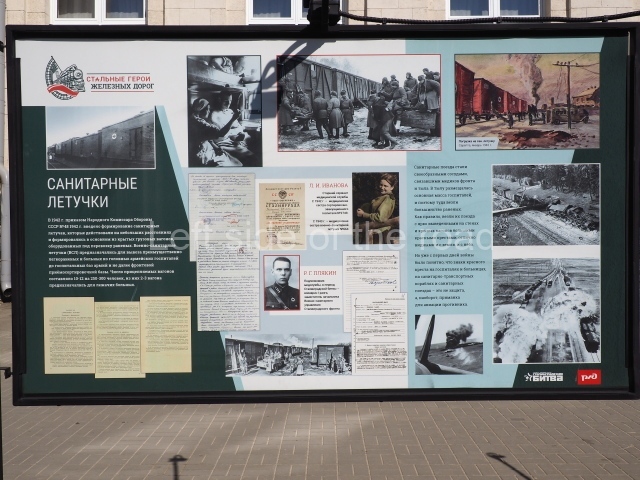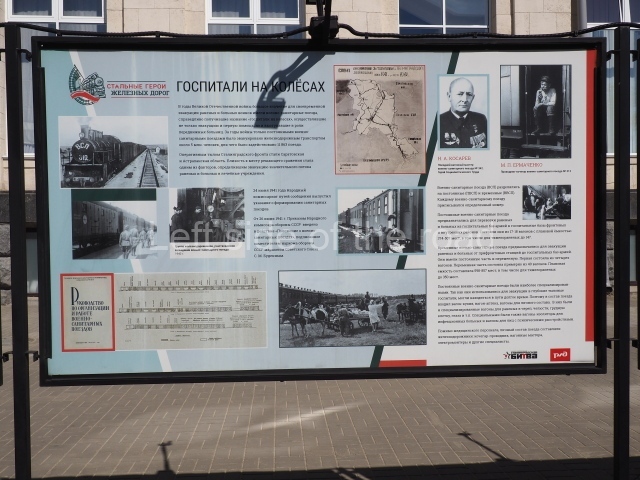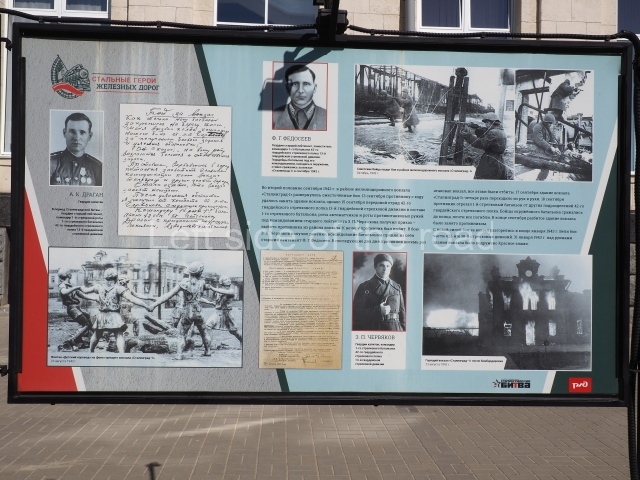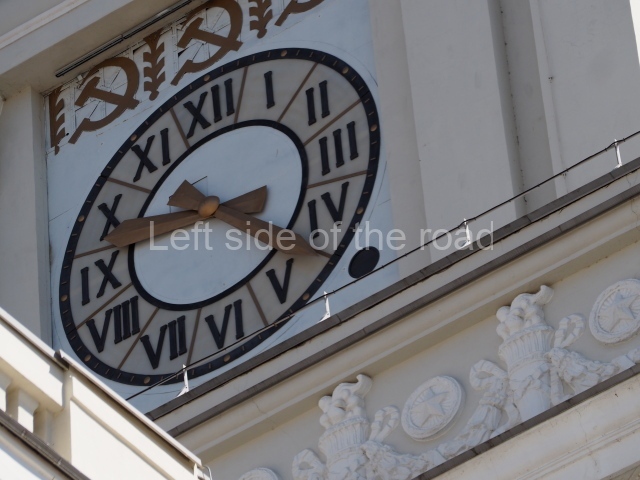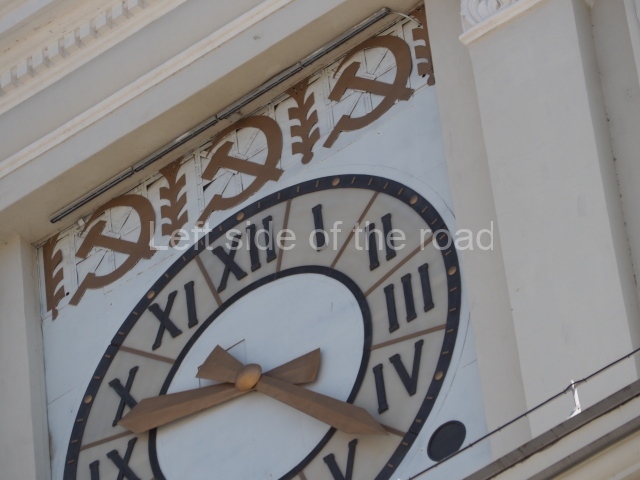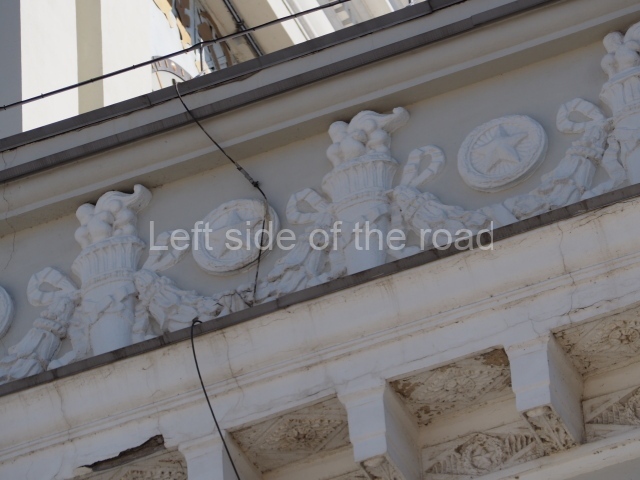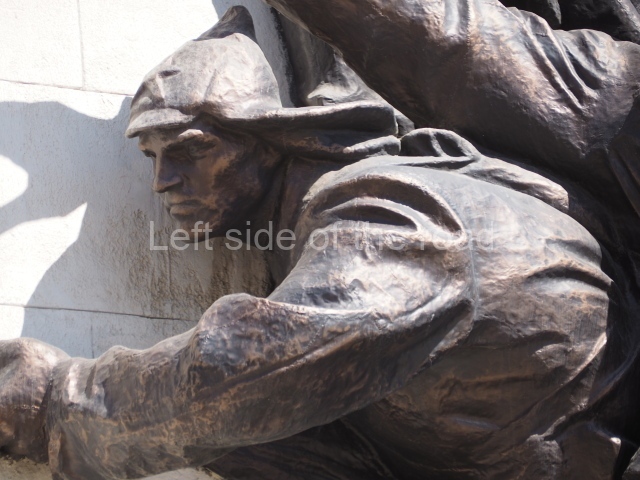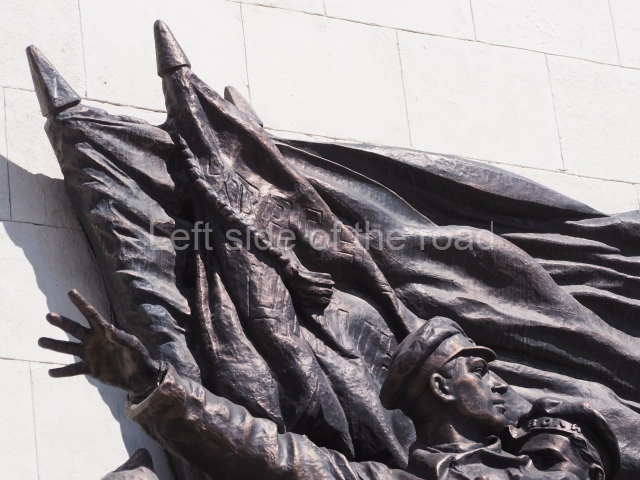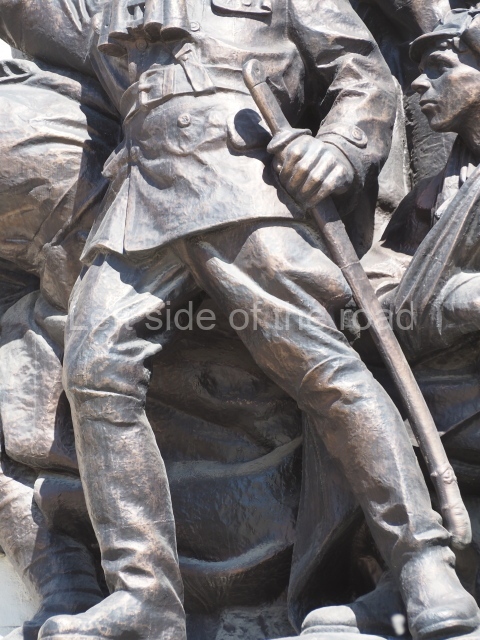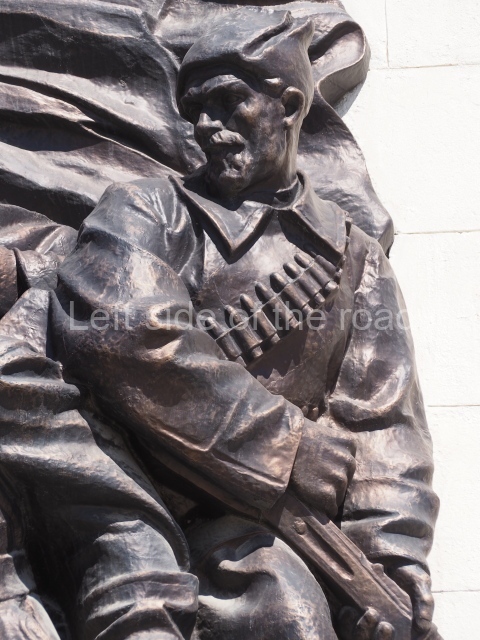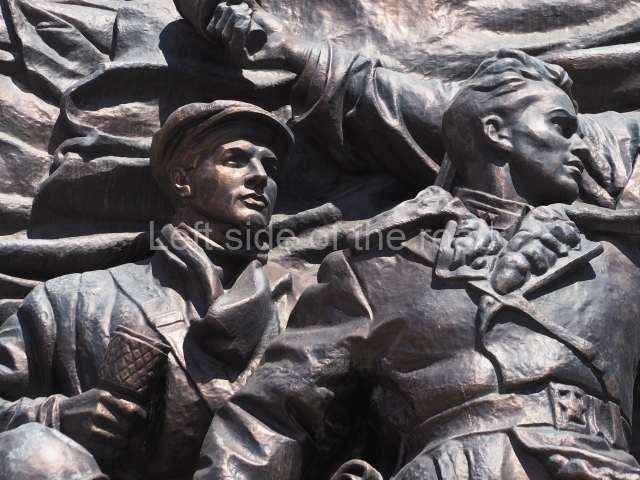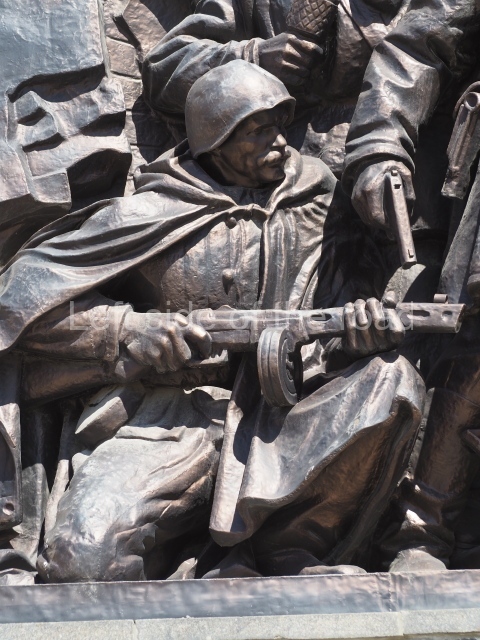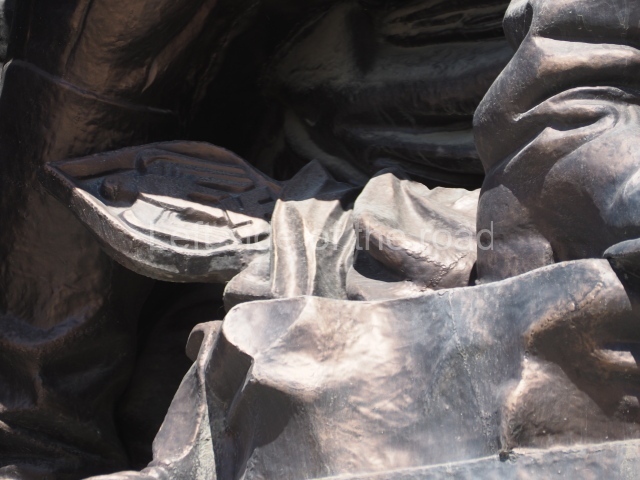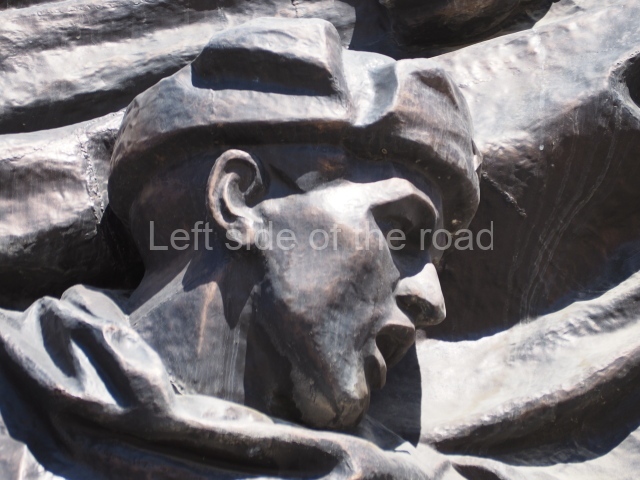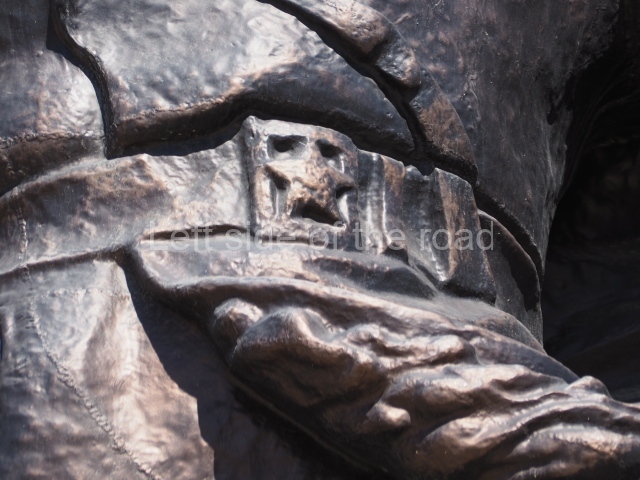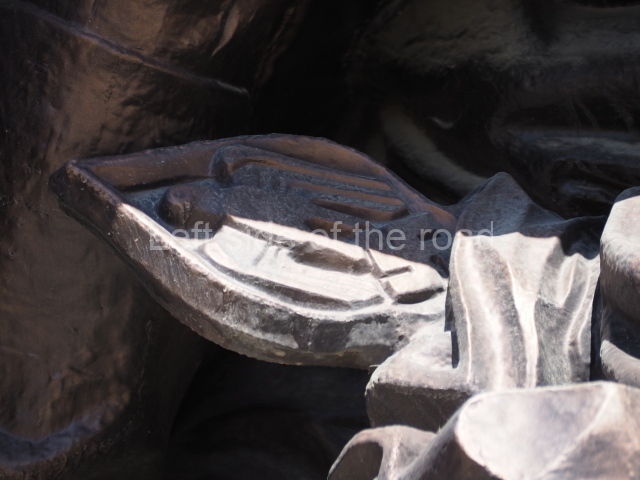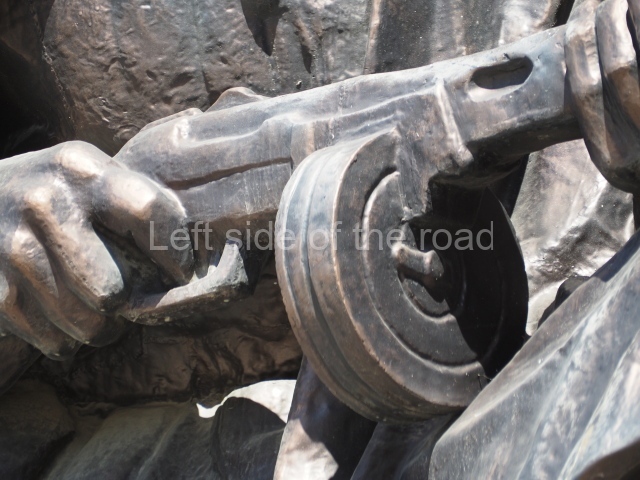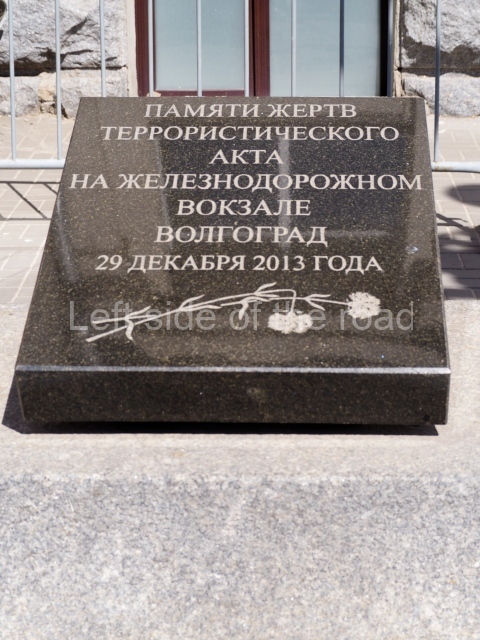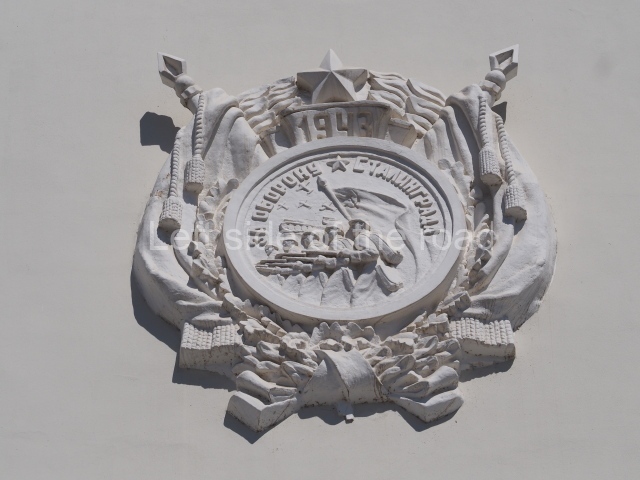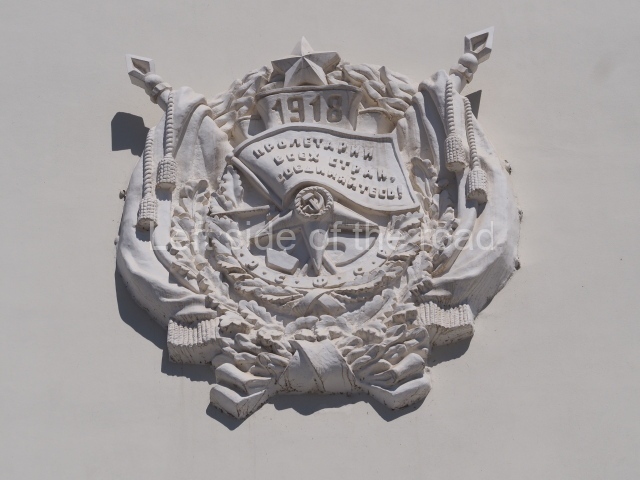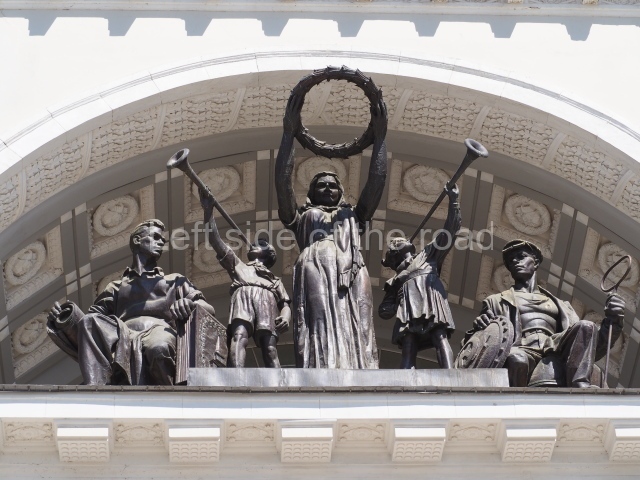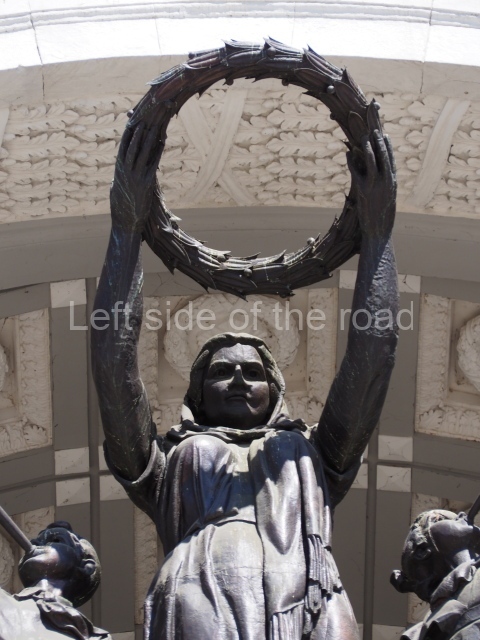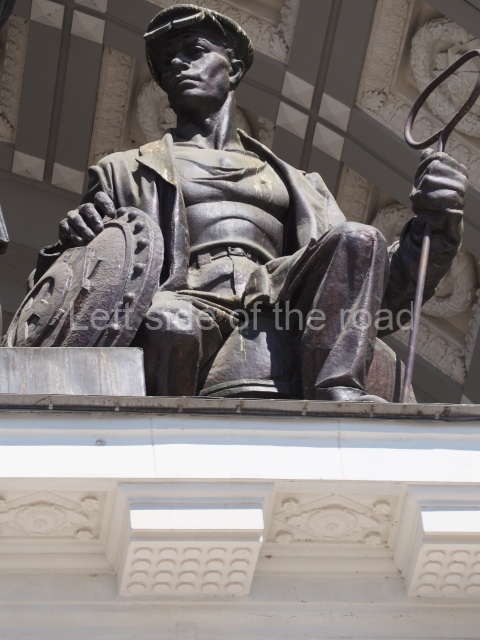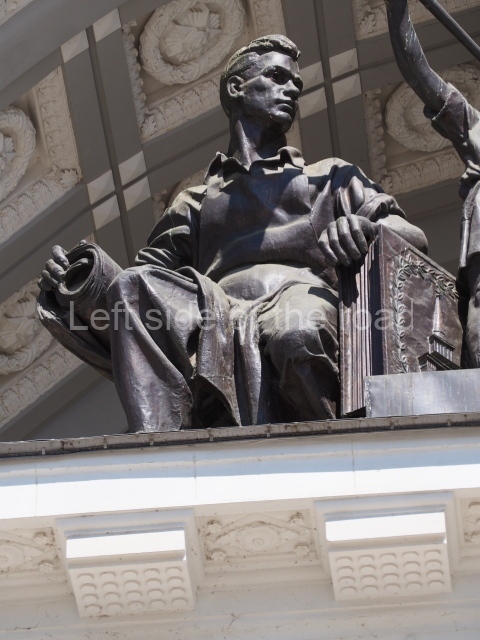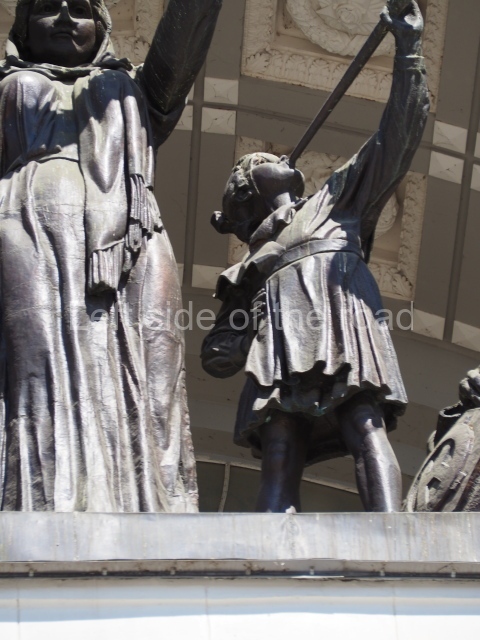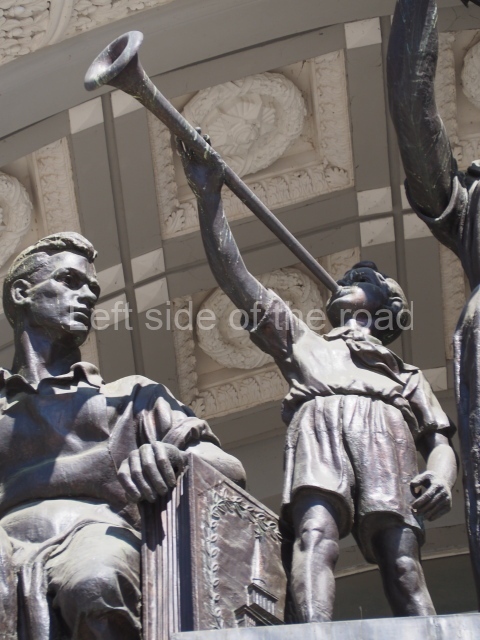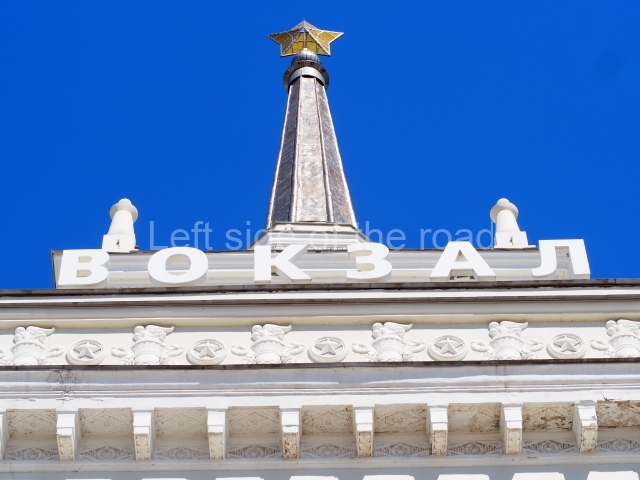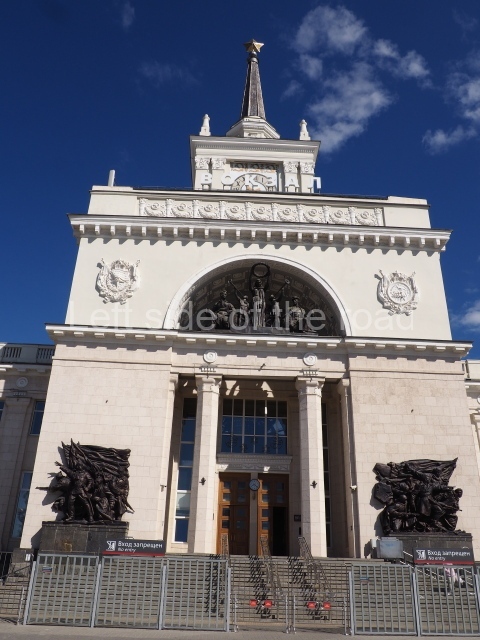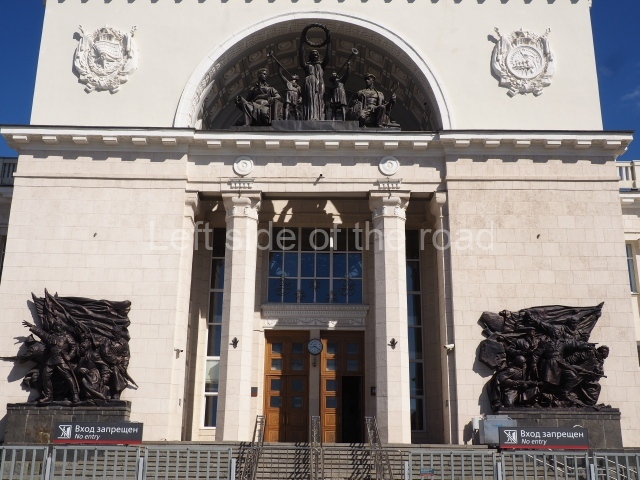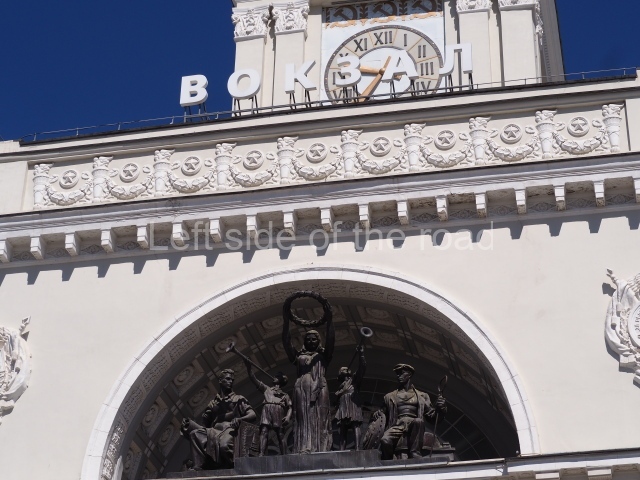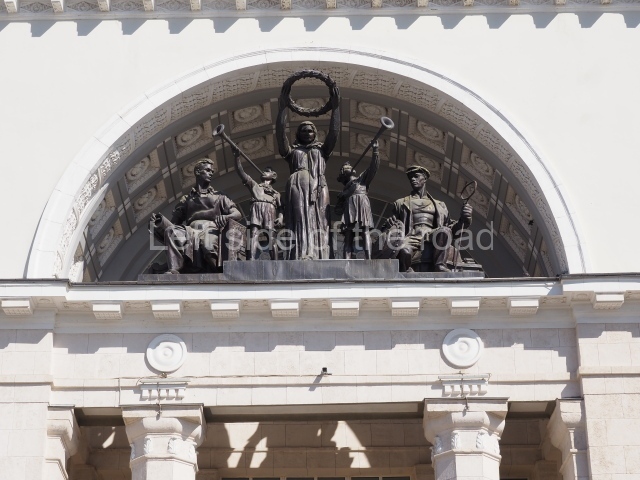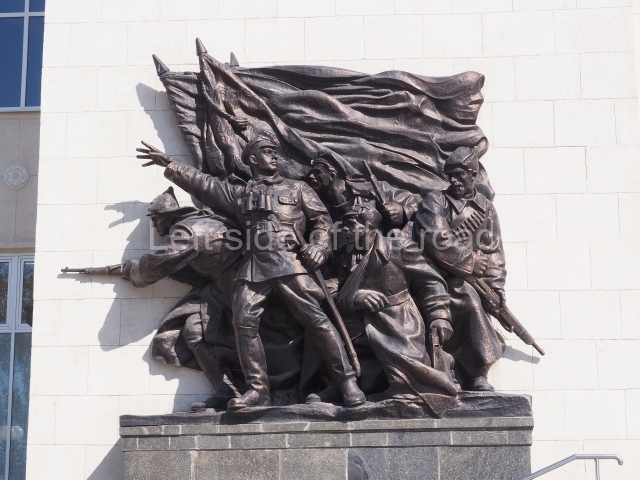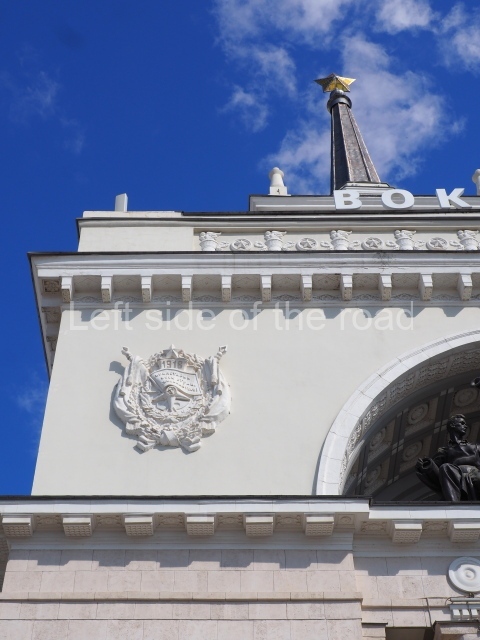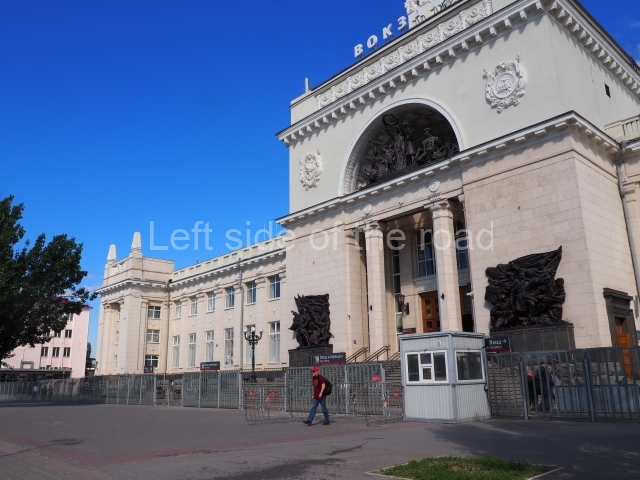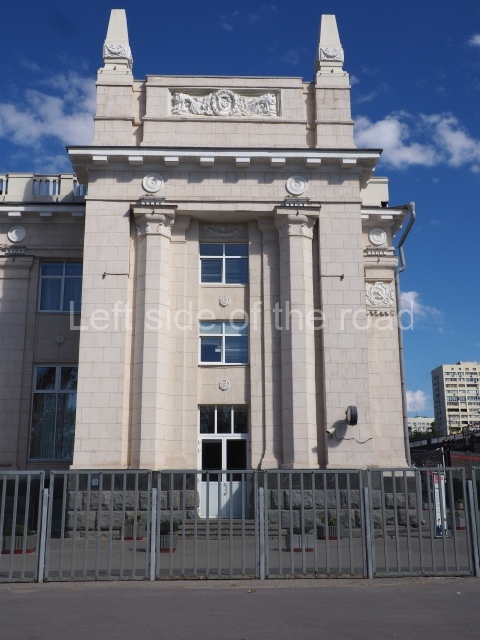Stalingrad (Volgograd) Railway Station
It is located in the Central District of the city at Railway Station Square, 1. The station is one of the largest in Russia and serves long-distance trains and suburban trains.
The first railway to serve Tsaritsyn (now Stalingrad/Volgograd) was the Volga-Don railway in 1862. The first railway station was constructed of wood. In 1871 the station was replaced with a brick structure.
During the Second World War, the building was almost completely destroyed in the Battle of Stalingrad. In the period from July 1951 to May 1954 the new station building was erected on the site of the old building. The station commissioned June 2, 1954. In 1997 the building of the railway station was designated an architectural monument. In 2005, the station building was renovated for the 60th anniversary of Victory Day, the capitulation of Nazi Germany to the Soviet Union in the Second World War.
On December 29, 2013, the station was the site of a suicide bombing in which at least 16 people were killed. The station was re-opened after reconstruction on May 7, 2014, just in time for Victory Day holidays.
The station is a three-story building with a ground floor tower crowned with a spire. The building is made of a combination of brick and concrete, the facade consists of ornamented granite. The interior walls are mainly marble. The ceiling is decorated with stucco and several paintings of the battles that took place in the city.
Text above from Wikipedia.
Aspects of the building;
Sculpture in the pediment at the front of the building
The Apotheosis of Labour – sculptors M. Pavlovskii, N. Pavlovskaya, V. Bezrukov.
I read somewhere that this is supposed to be a ‘copy’ but with no more information. So don’t really understand that as I don’t think this sculpture was installed in the building that was destroyed in the siege – but I might be wrong.
Note the image on the cover of the folder the male on the left is holding – it’s that of the station building itself.
Ceiling murals
There are three of these ceiling panels – one circular over the ticket hall, another circular over the seated waiting area and the third is rectangular in a large room off the ticket hall that used to be a cafe but which is now a VIP/1st Class lounge – which no one seems to use. However, when I asked to take pictures of that ceiling panel, and the room itself, there was no problem.
The first circular panel represents Tsaritsyn/Stalingrad in war – or more specifically, at the very end of war. The first depicts an image of the Red Army in the city after the victory over the White (reactionary and supported by the imperialist countries) forces in 1918 when it was known as Tsaritsyn. Opposite, on the same panel is an image of the events following the defeat of the Nazi invaders in 1943 when the city – now named Stalingrad – could commence reconstruction as the Red Army went on to victory in Berlin.
The second circular panel depicts landmarks in the civilian life of the city. The first, in 1952, is the opening of the Volga Hydroelectric Station and the other is the opening of the Volga-Don canal in 1961.
Note the trees that are on the left and right of each panel, which play the role of separating the two events. In 1918 there is barely a leaf on the tree, there are more come 1943 but when we go into the 1950s and 60s we see the tree come into full leaf, mirroring the successes of the construction of Socialism.
The rectangular panel depicts a bucolic scene of workers on a State/collective farm in the area. Here note the presence of the electricity pylon commemorating the achievement of the electrification of the whole country, a challenge Lenin posed to the country in declarations in the early 1920s.
The artist of all the panels was Yakov Skripkov.
Bas-reliefs at the front of building
On either side of the main entrance to the station, under the tower and clock, are bas reliefs that depict, on the left, a representation of the Civil War and on the right the Siege of Stalingrad in the Great Patriotic War. Note the Nazi standard being trampled underfoot in the second bas relief.
Information boards
On my visit in late May 2024 there were a number of information panels on display on either side of the main station building entrance basically telling the story of the role of the building in the history of the city from the time of the Civil War, through the siege to reconstruction after the war. This was soon after the celebration of Victory Day of May 9th so they may only have been there temporarily.
Terrorist attack
There’s a plaque at the front of the station to commemorate those killed in a suicide bombing on December 29 2013.
Related;
Mamayev Kurgan – The Motherland Calls! – Stalingrad
Children and crocodile fountain – Railway station square
Kievskya railway station – Moscow
Kazansky Mainline Railway Station – Moscow
Architects (of the building);
A Kurovsky and S Briskin
Location;
1, Station Square, Volgograd
GPS;
48°42′45″N
44°30′49″E











